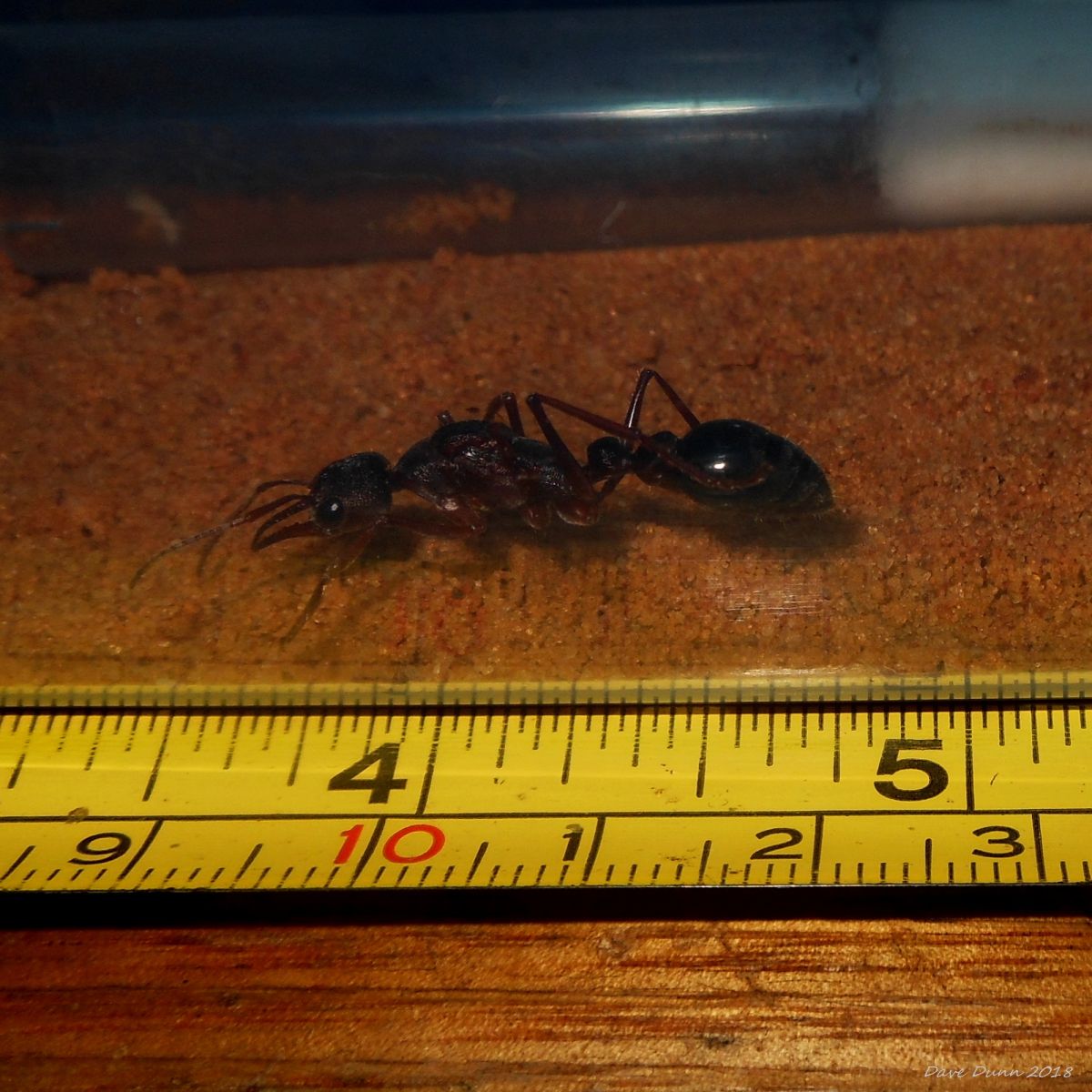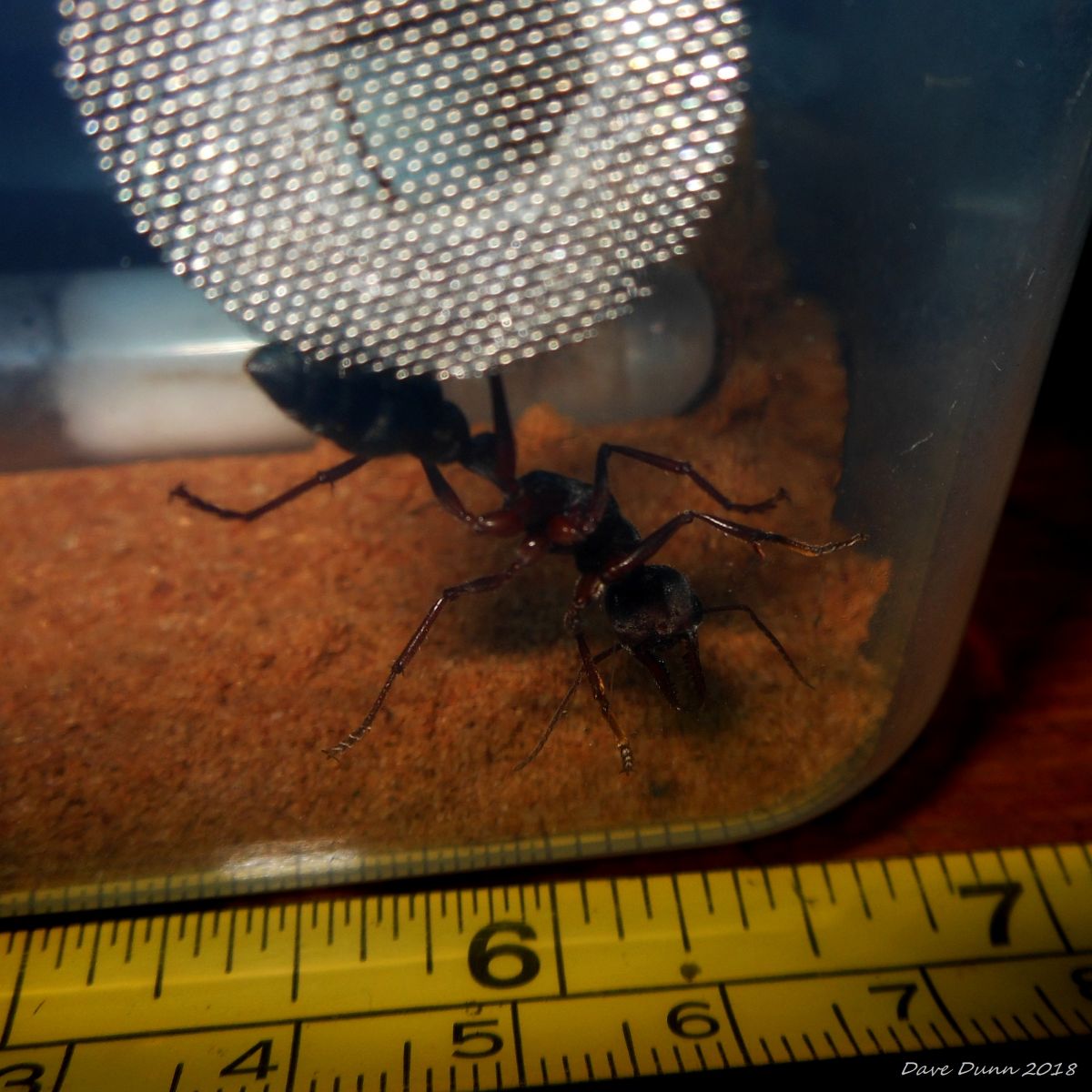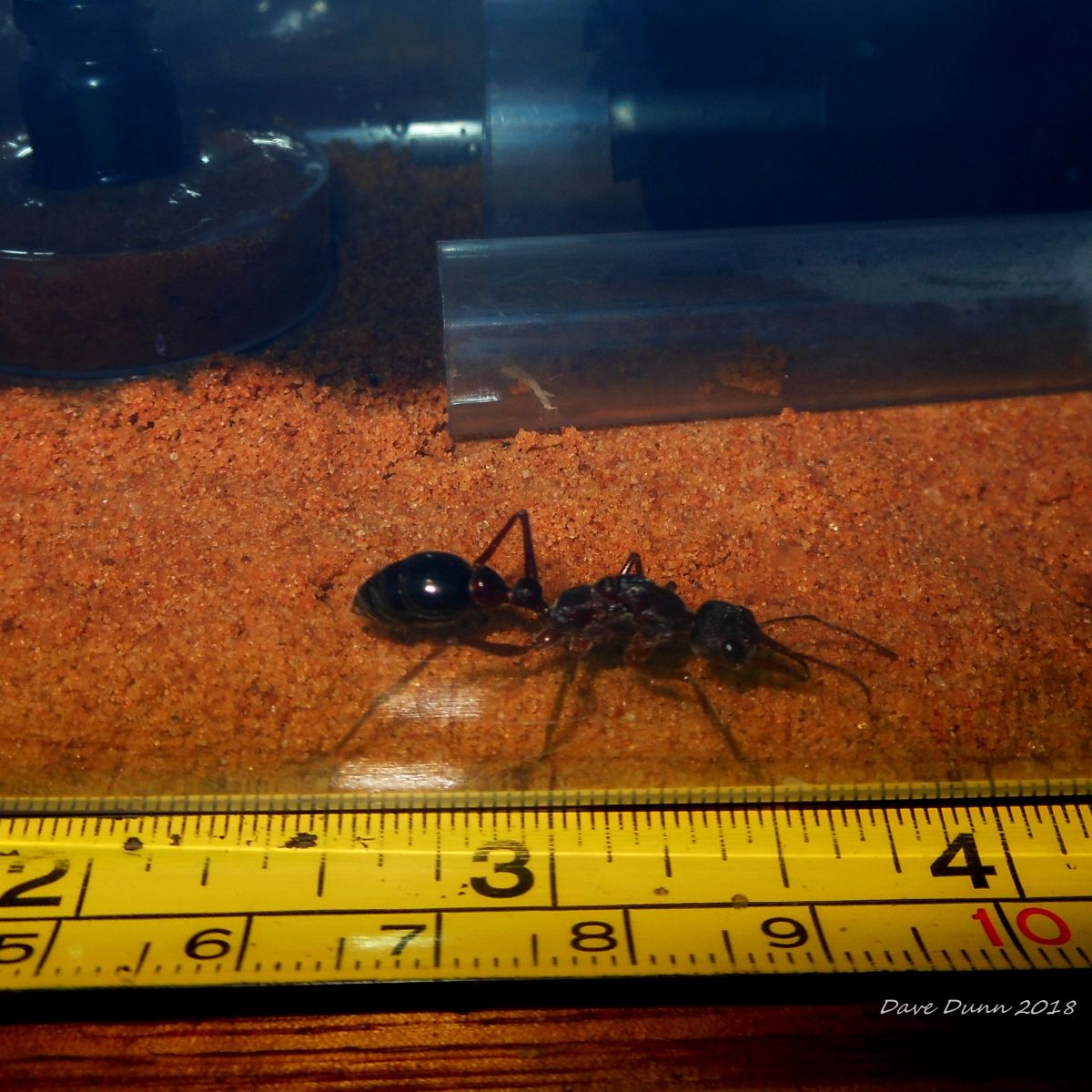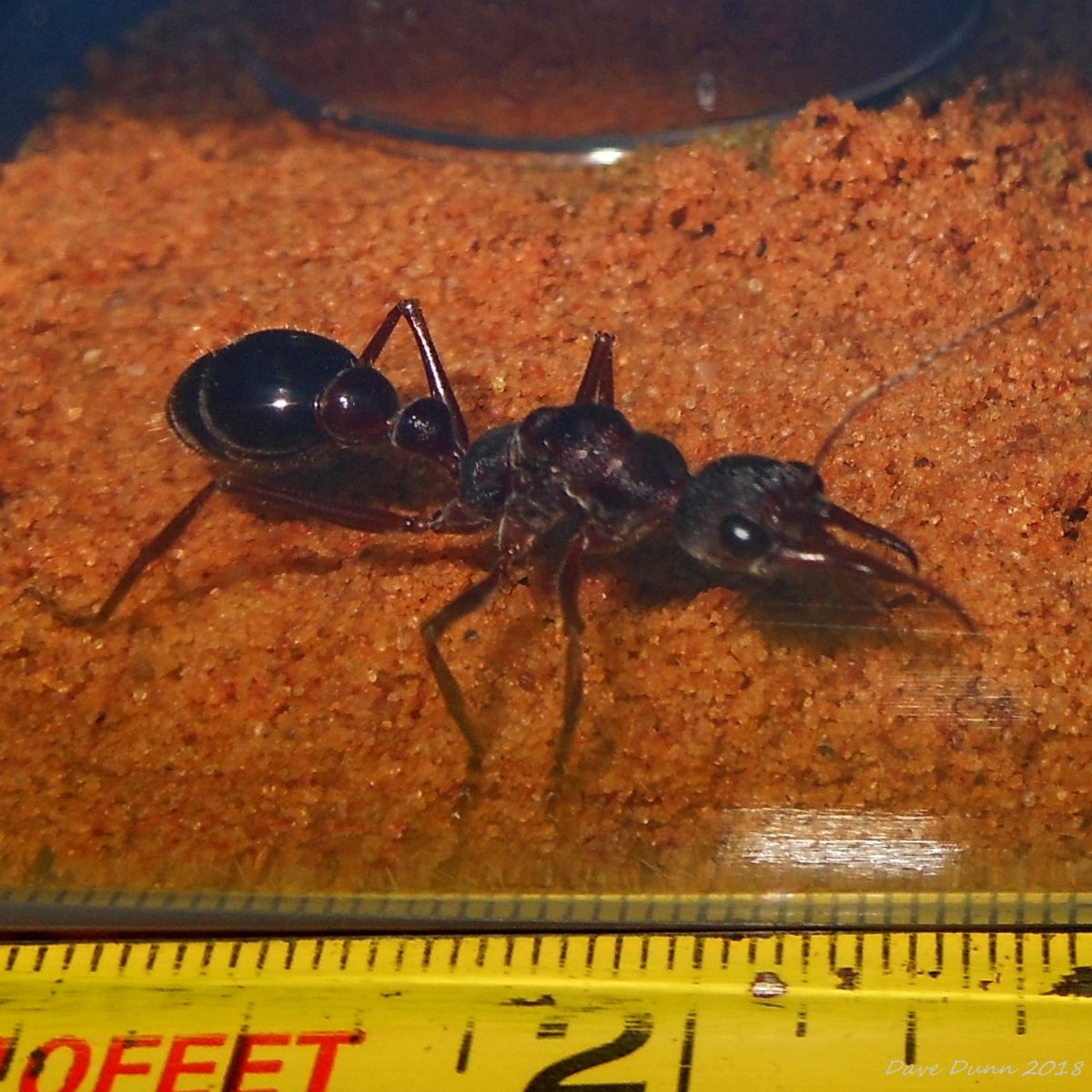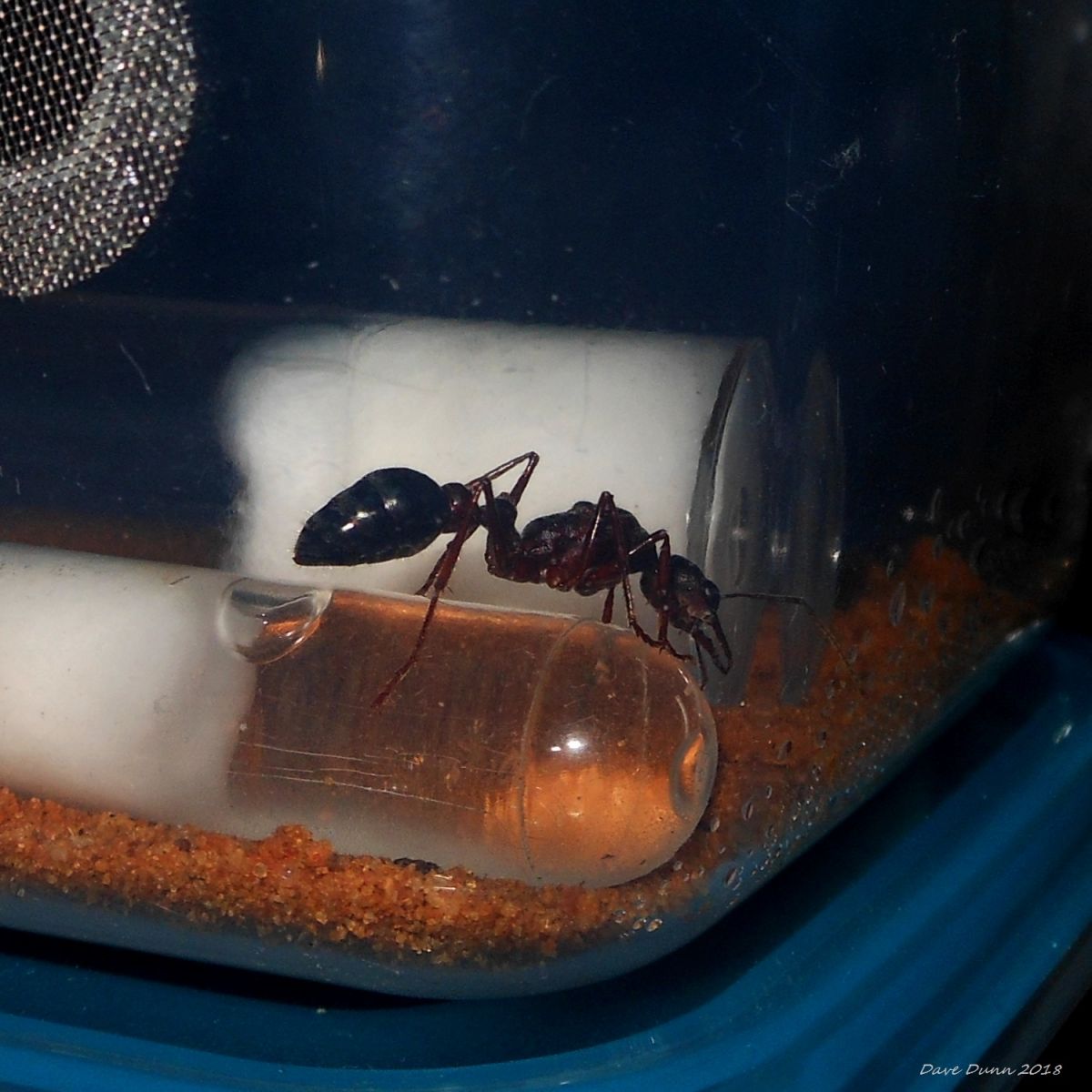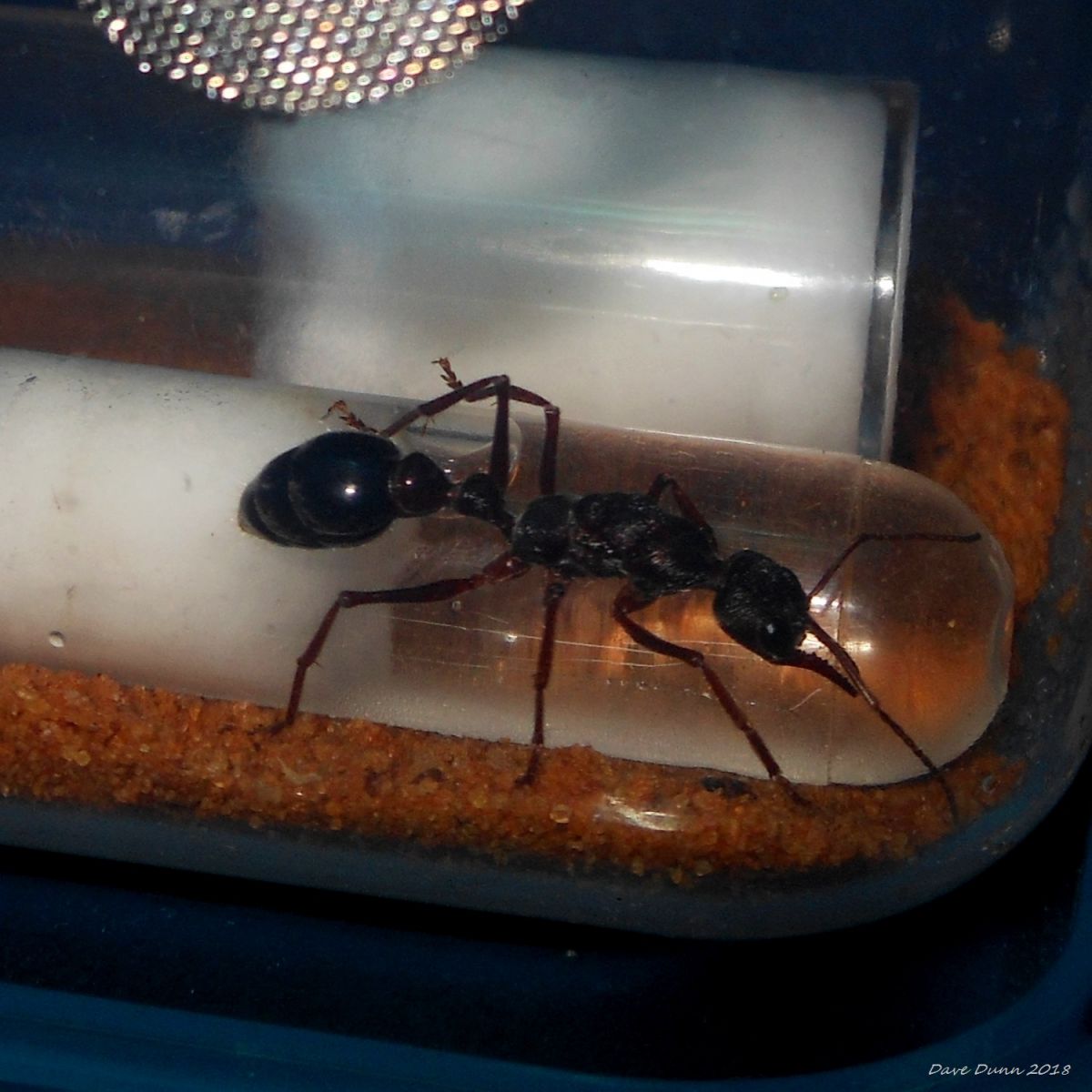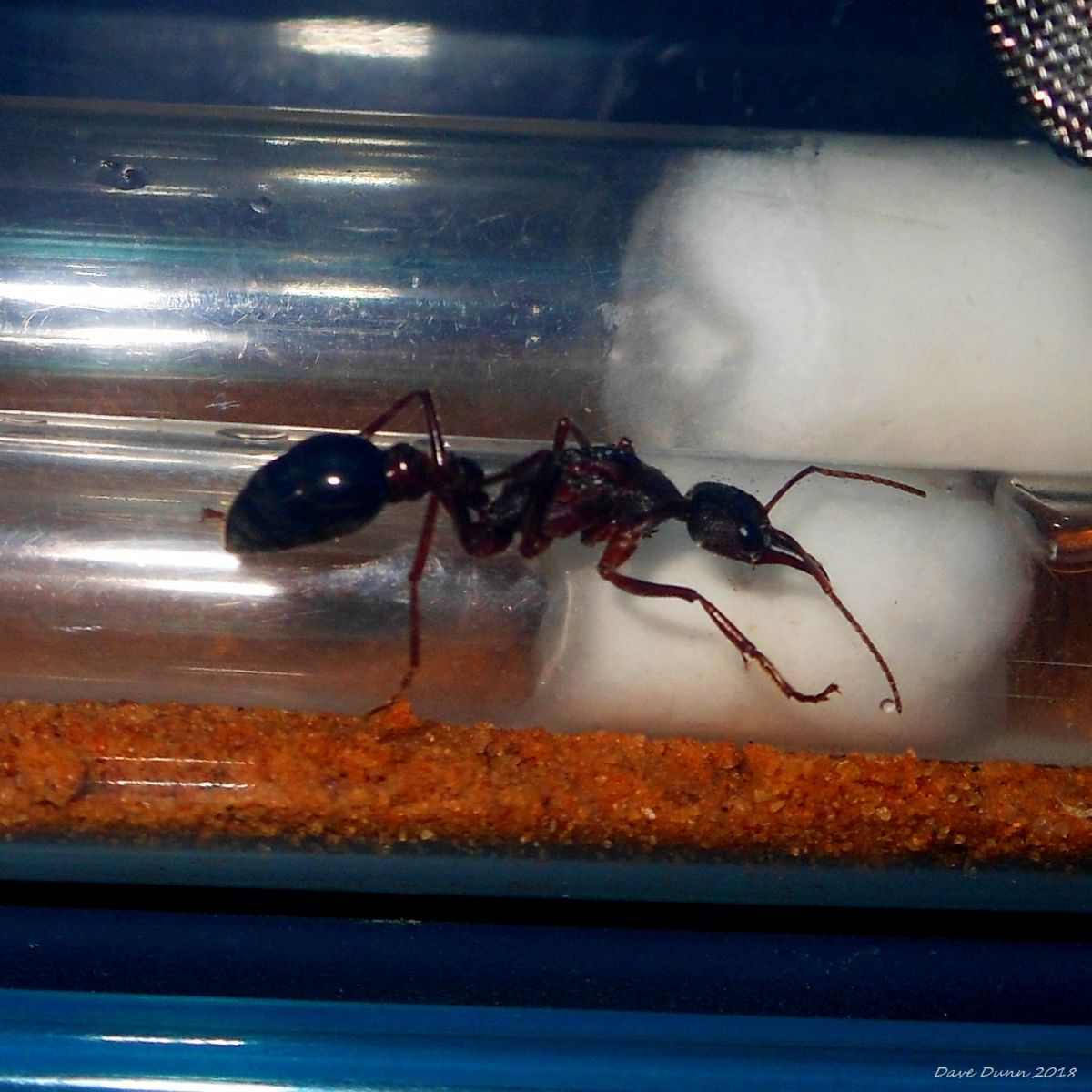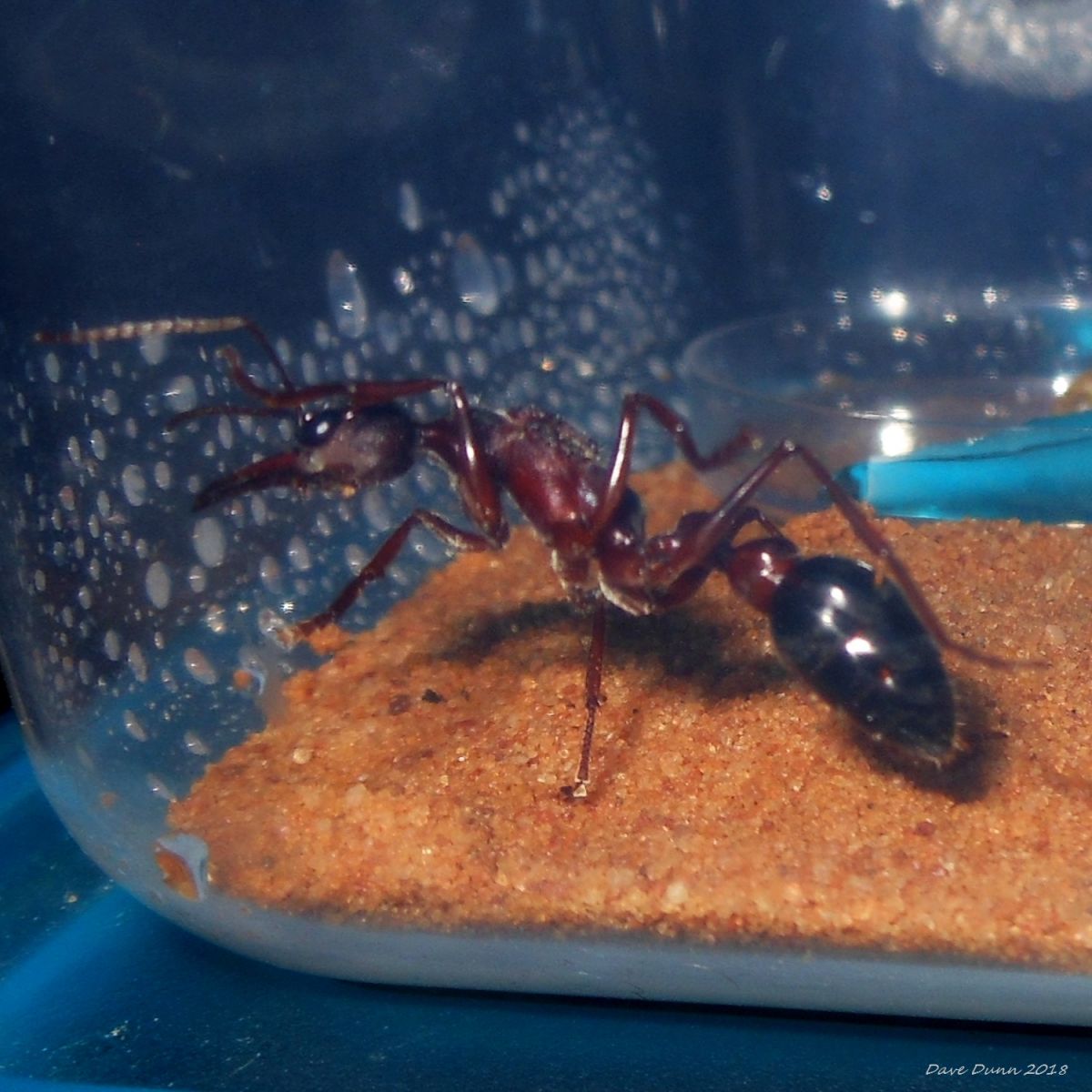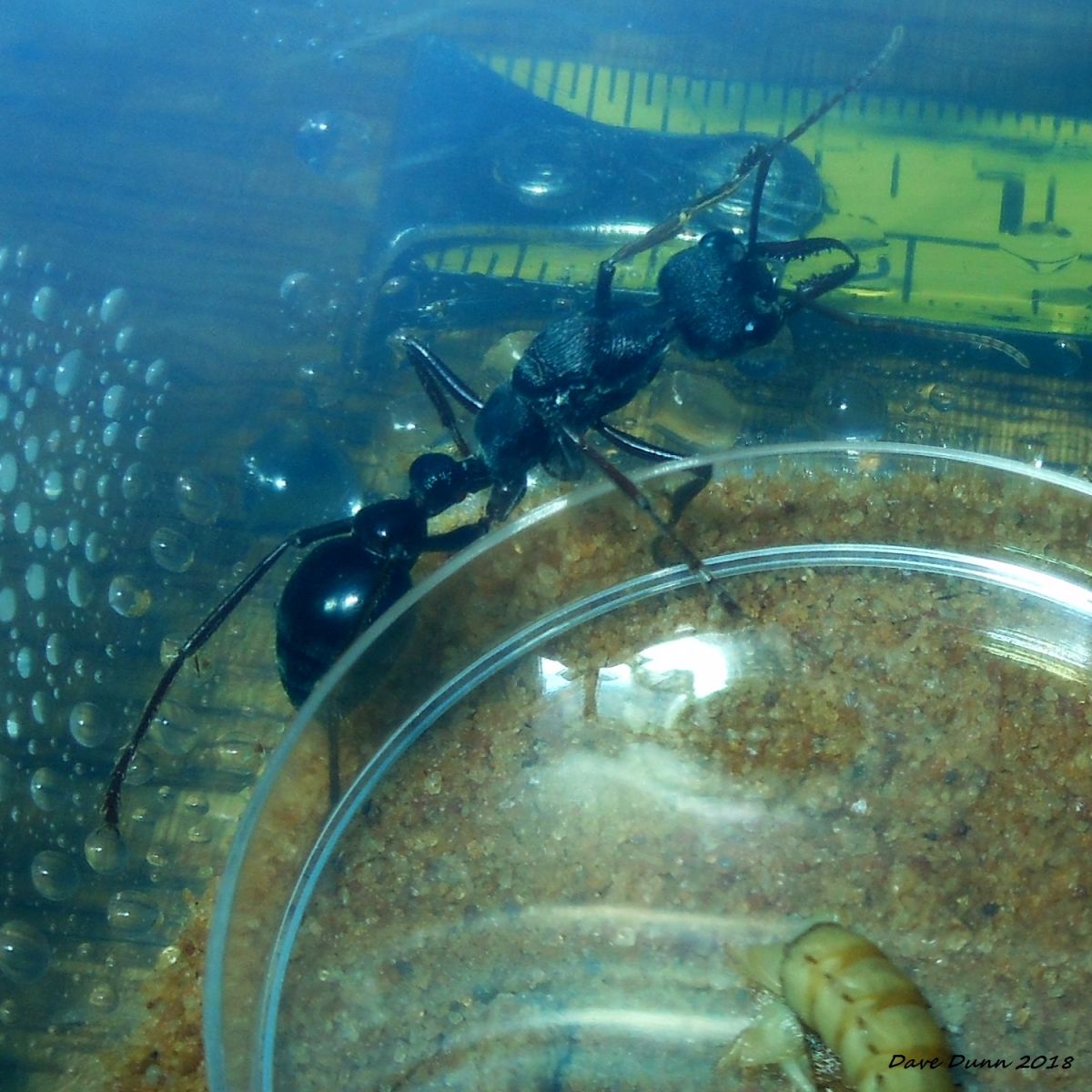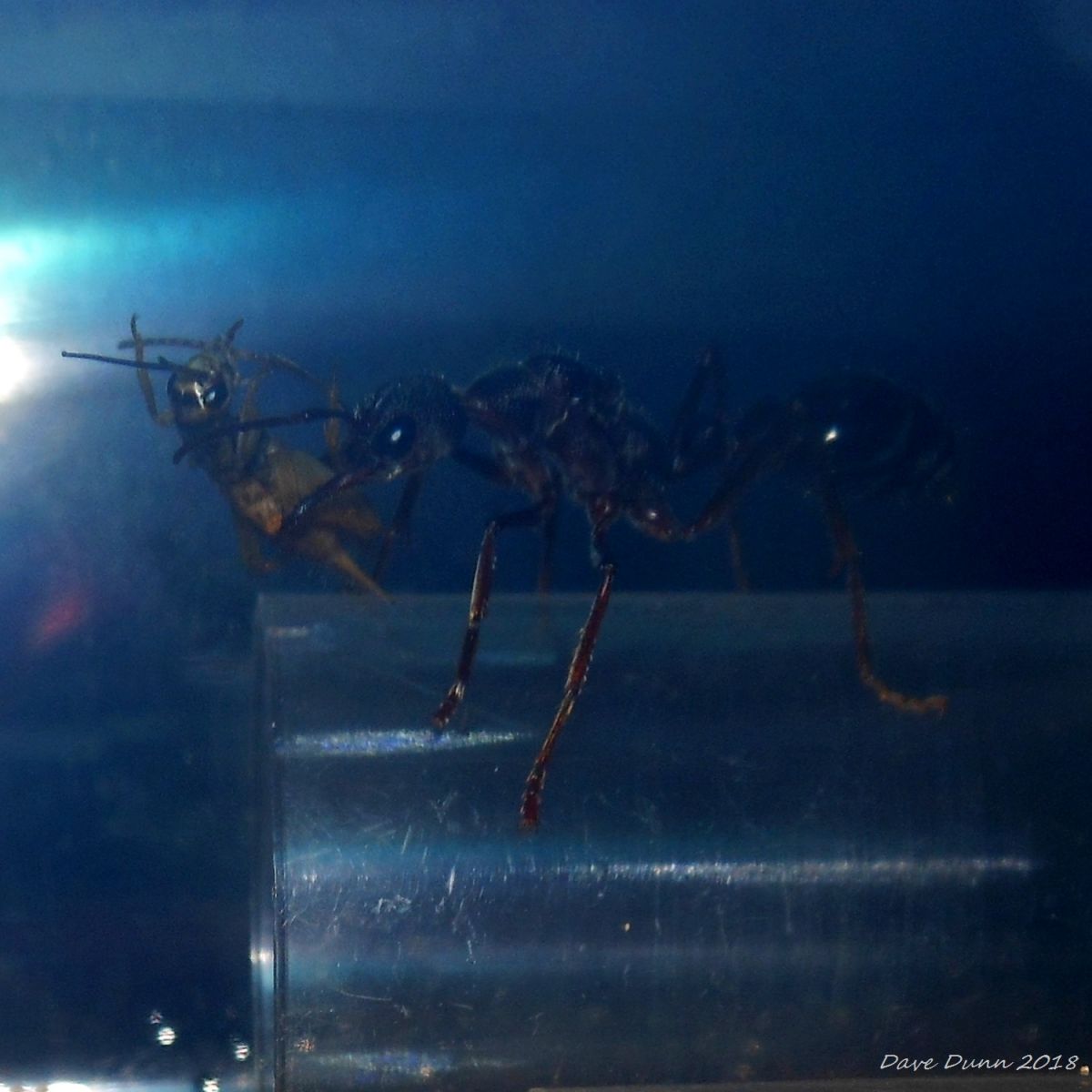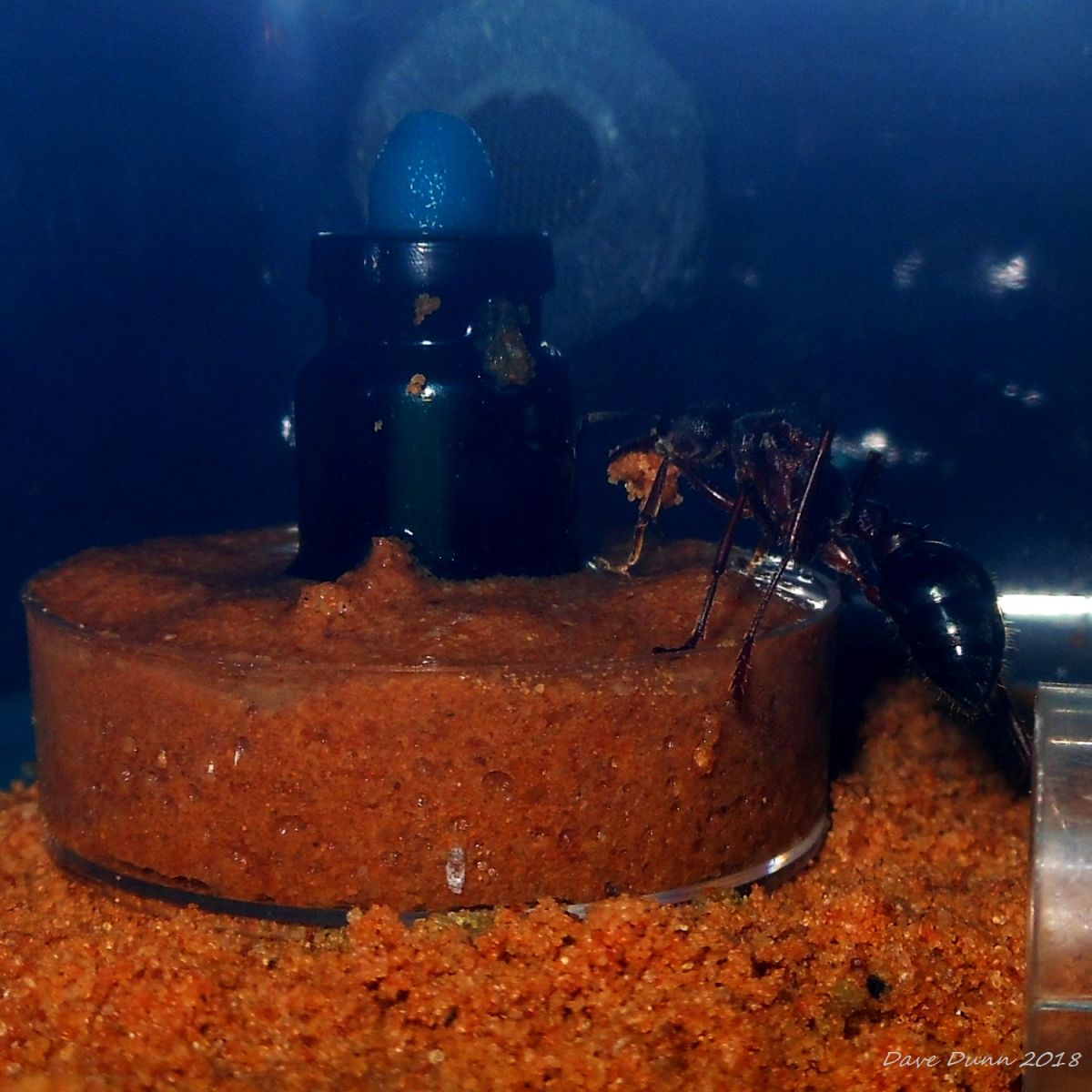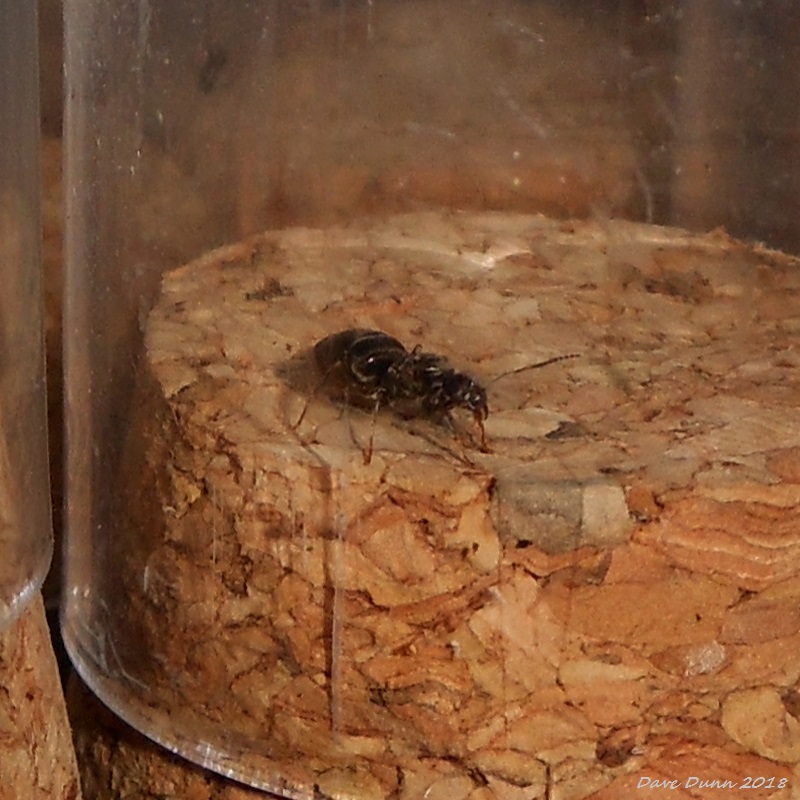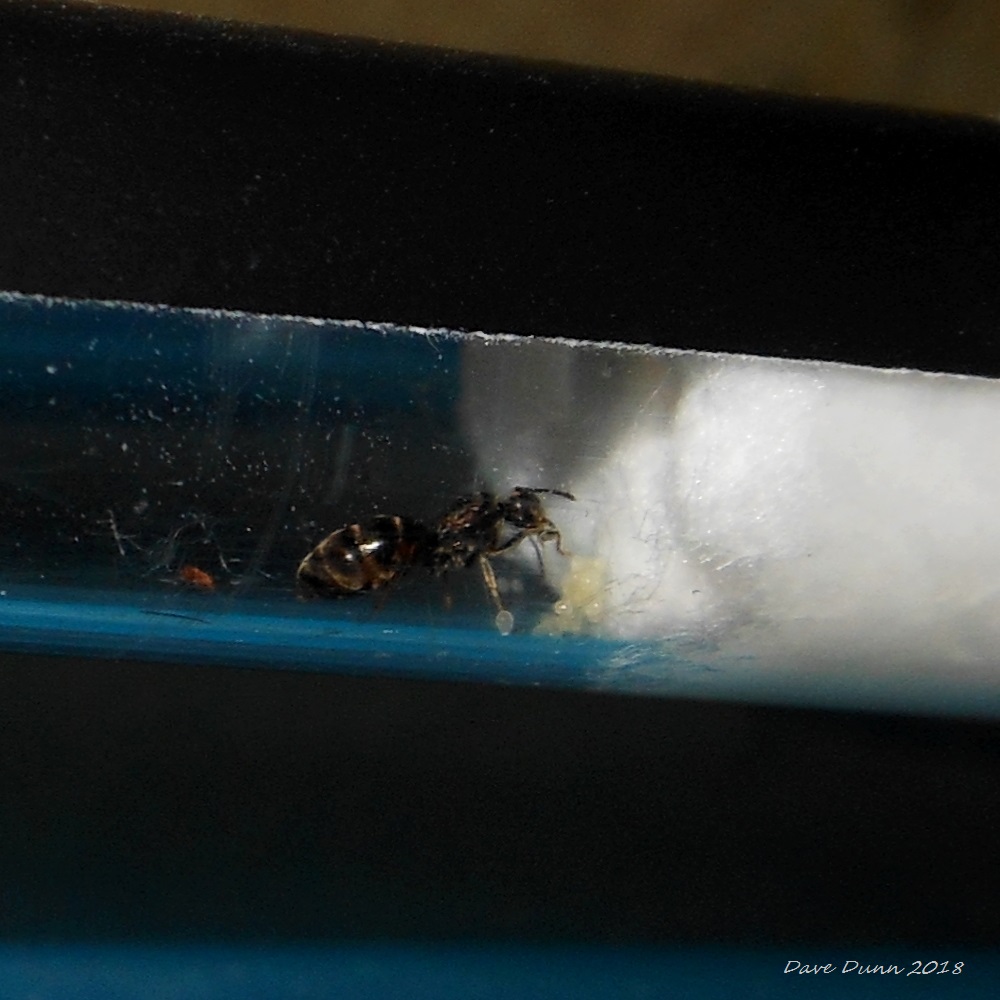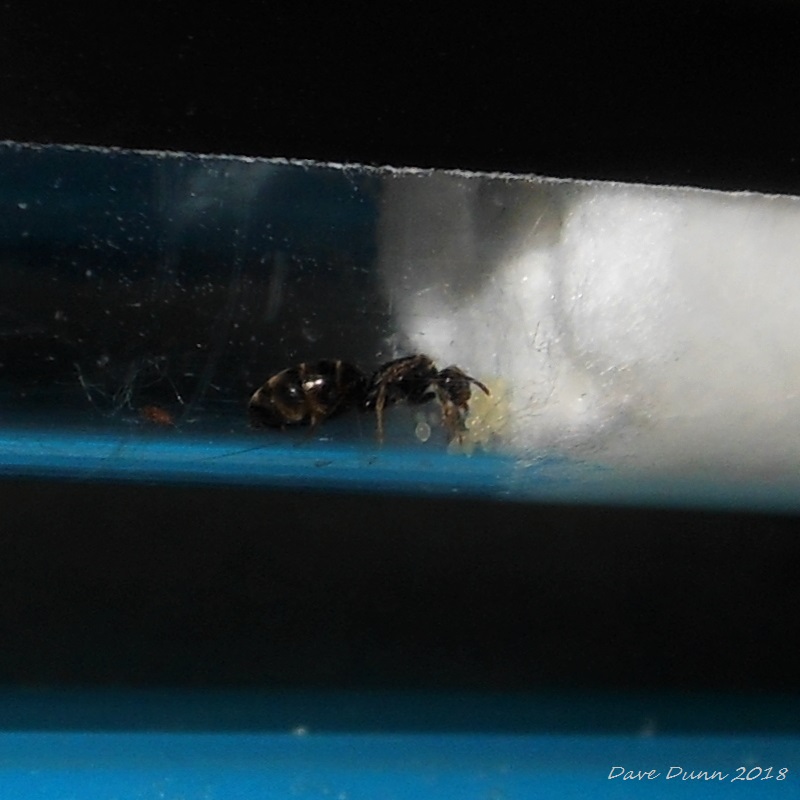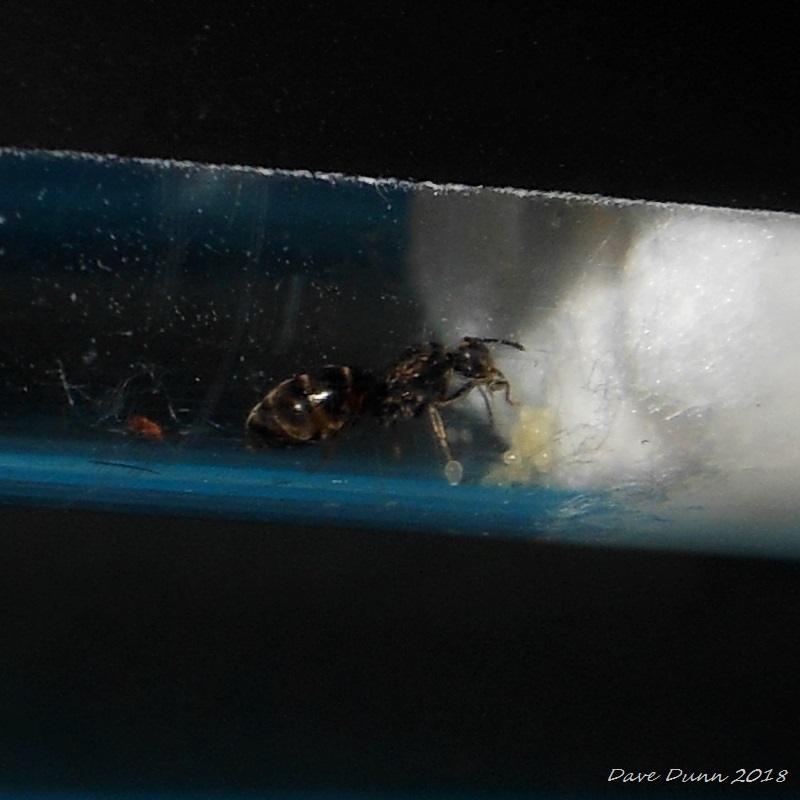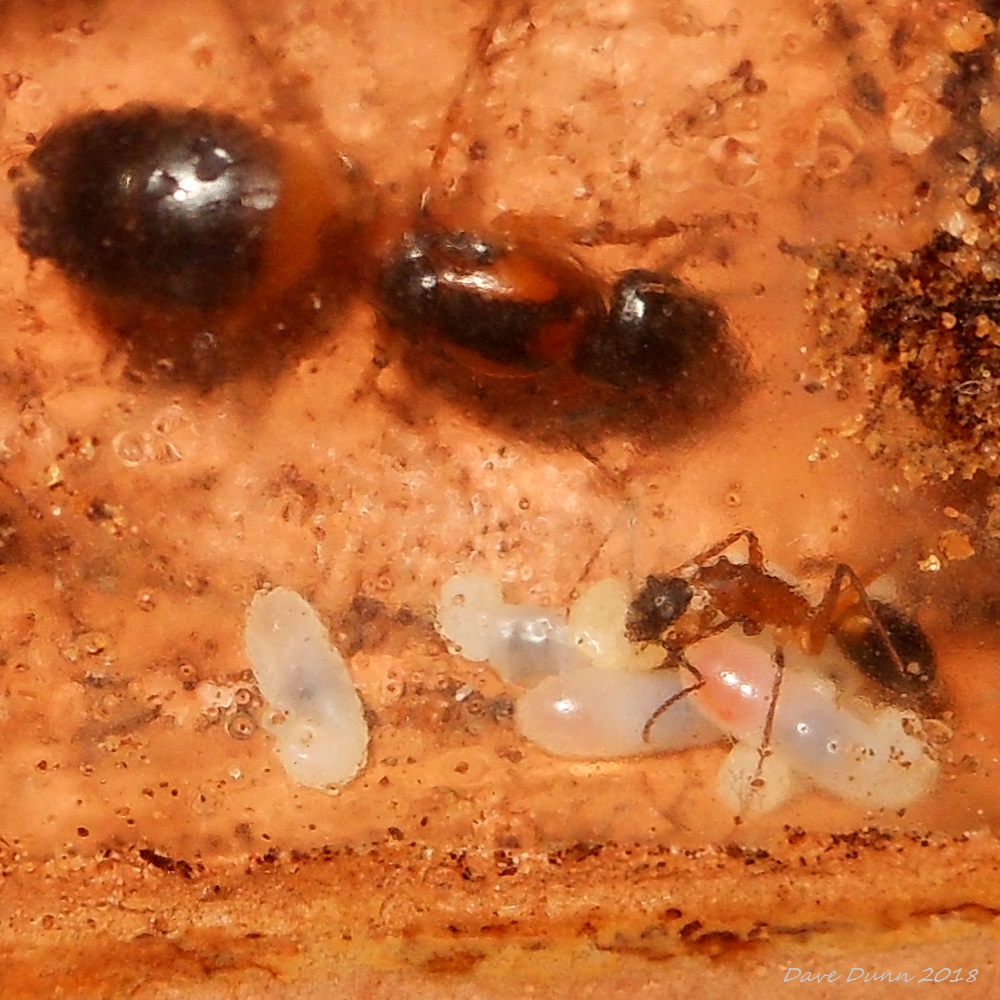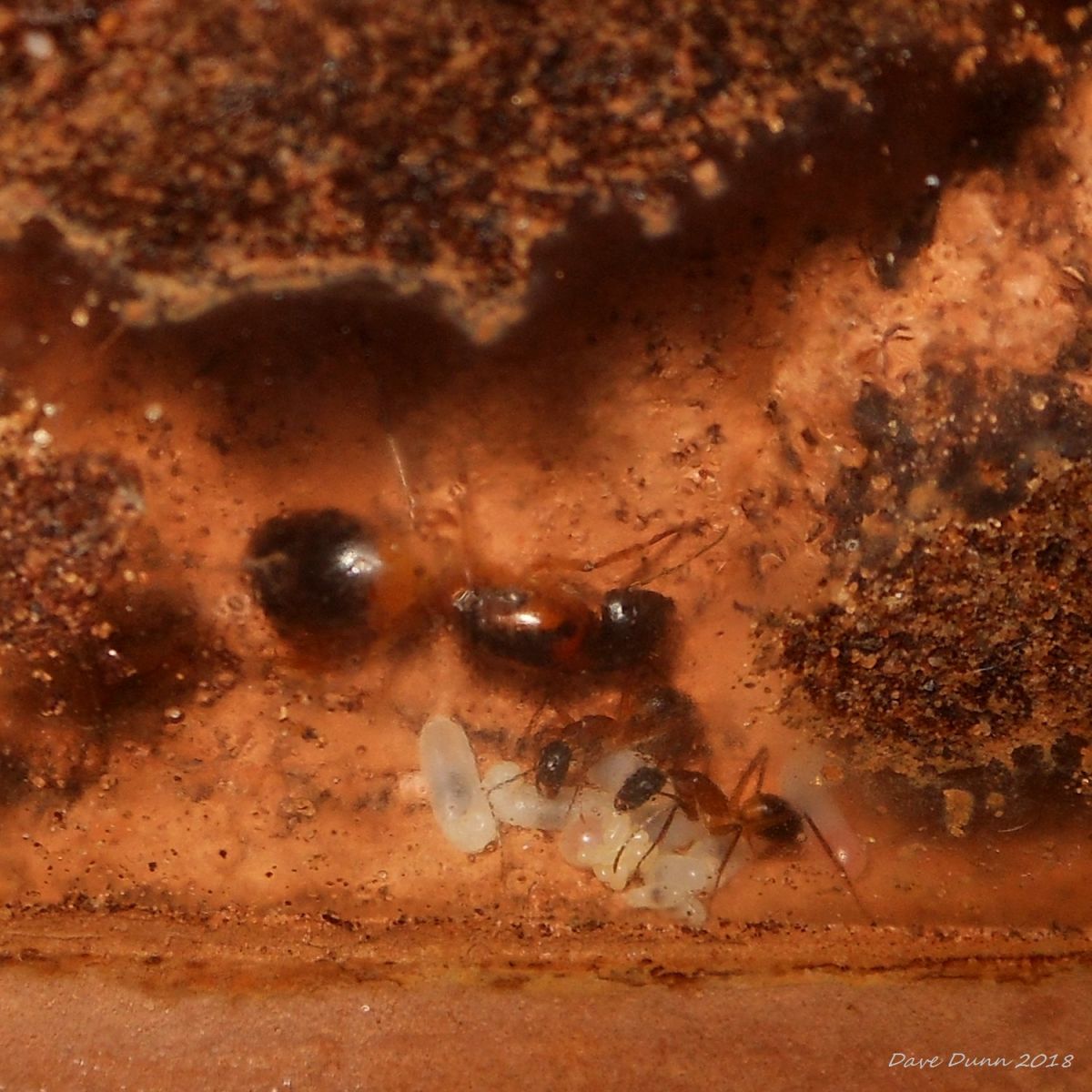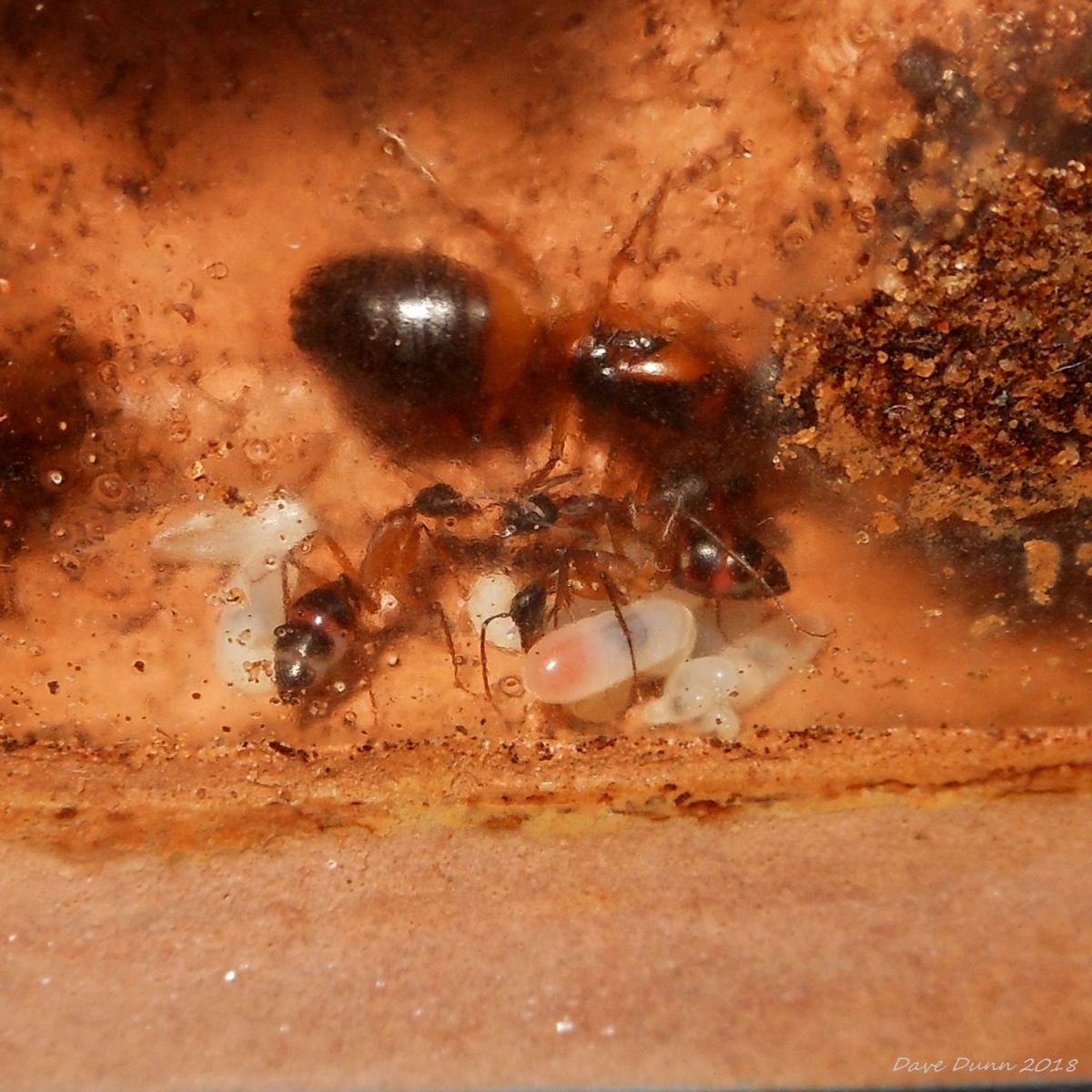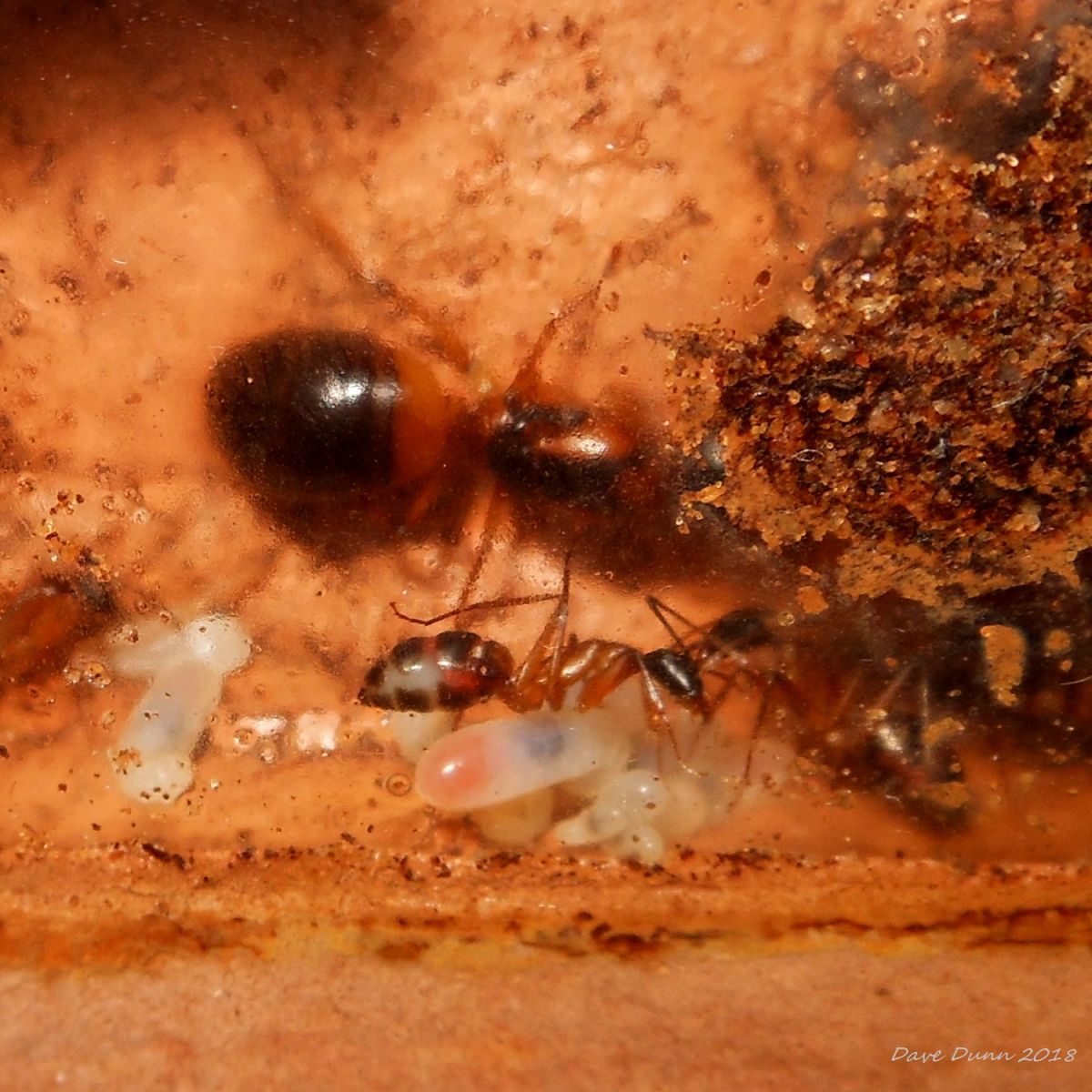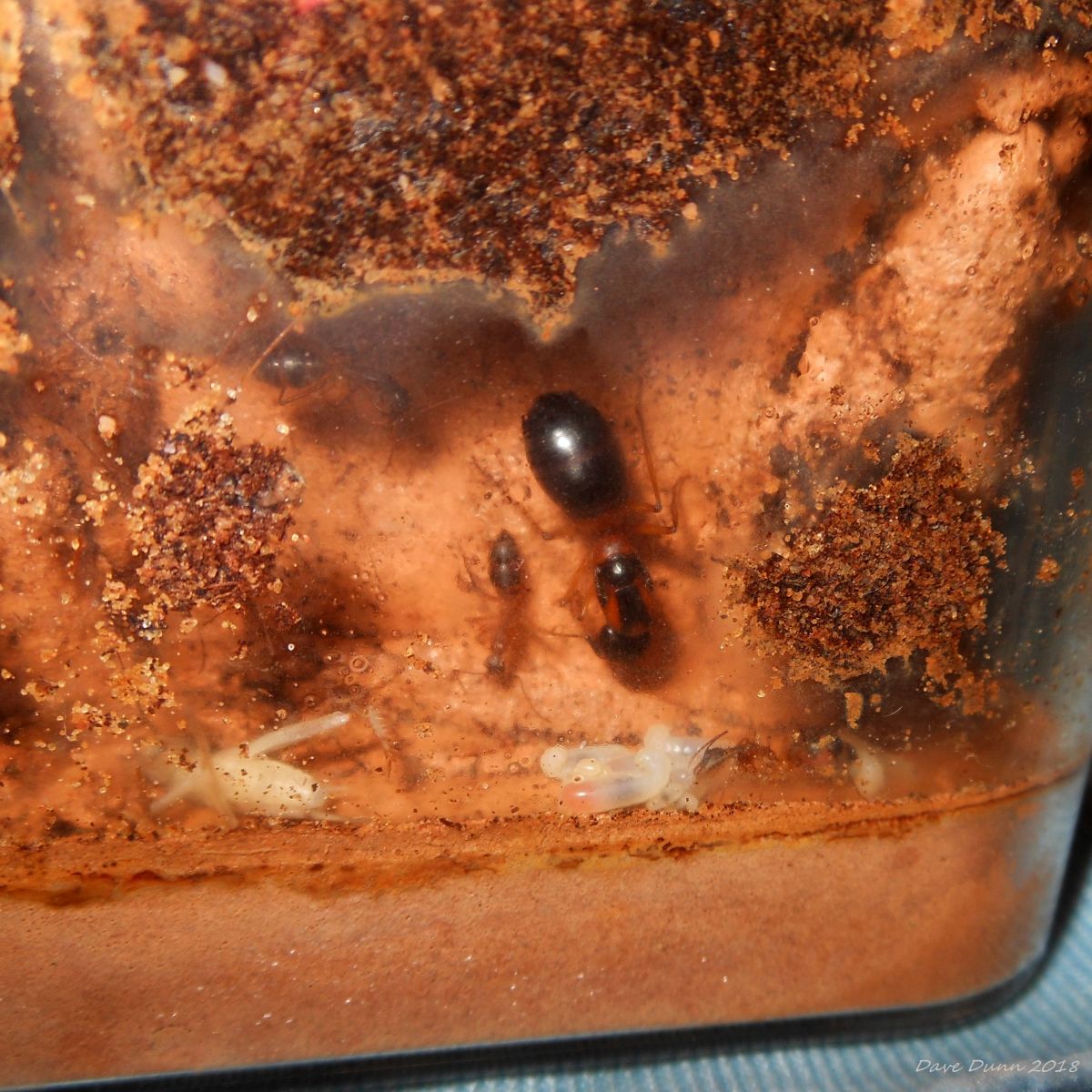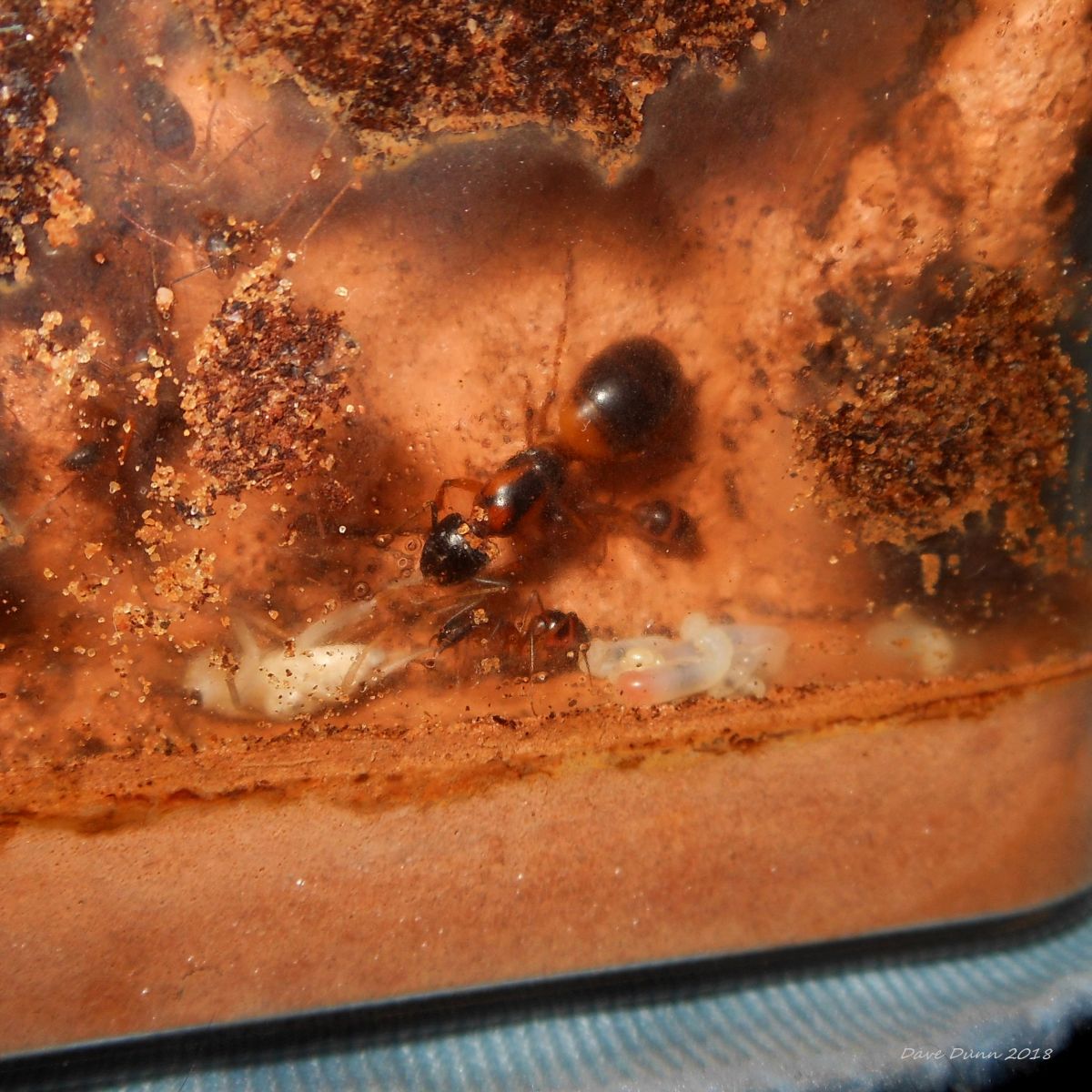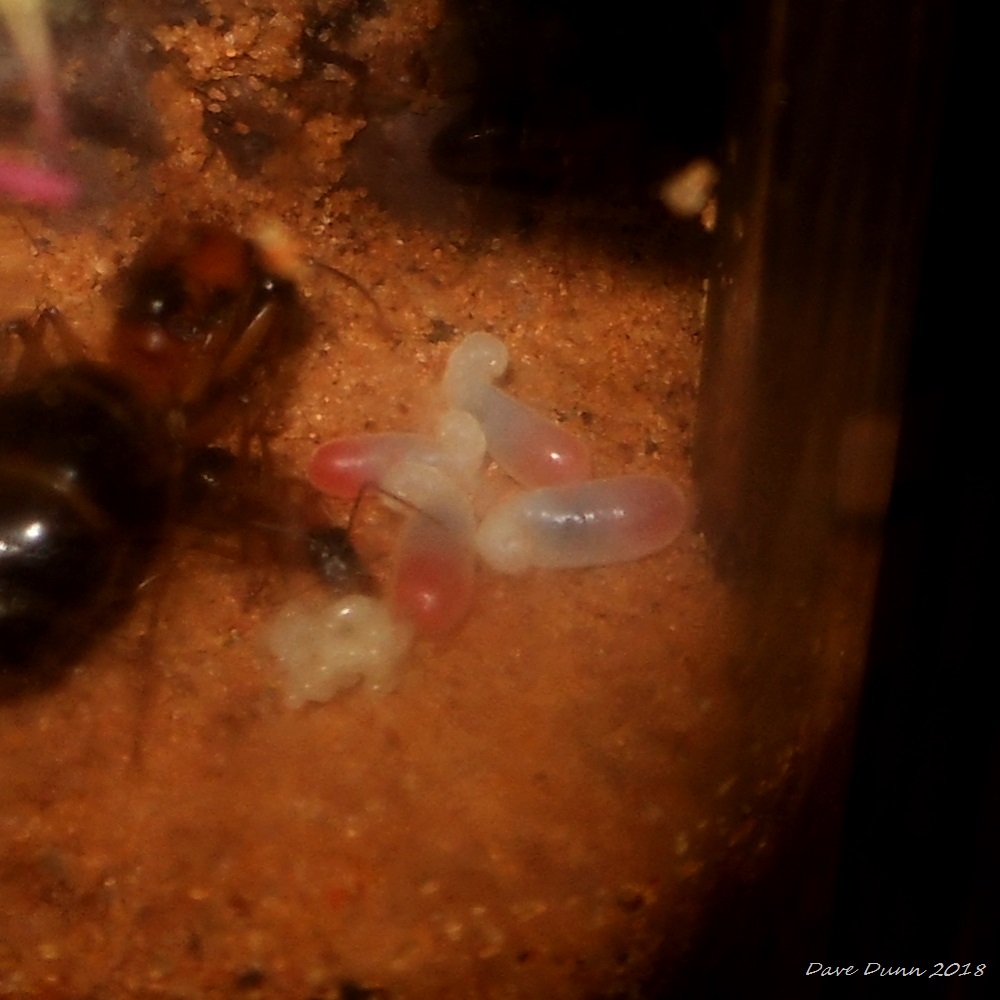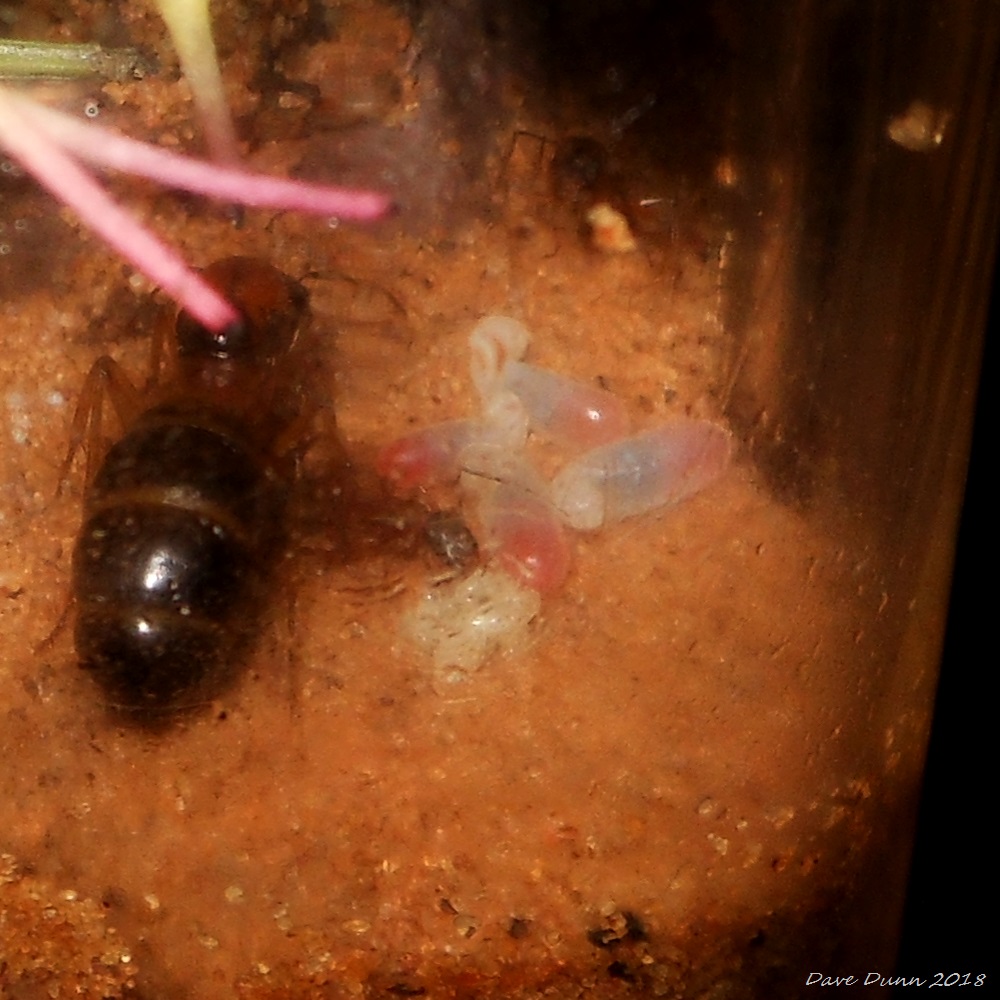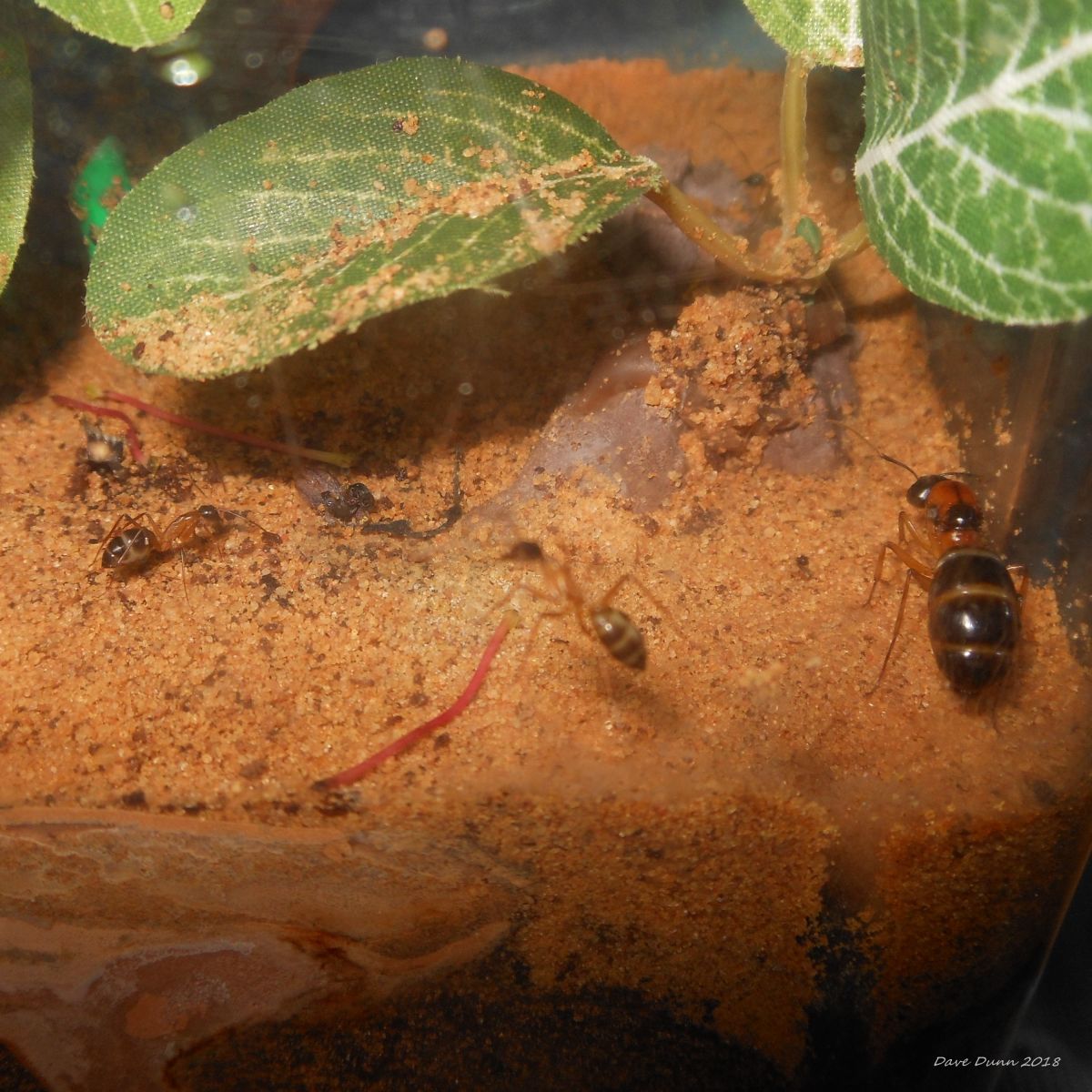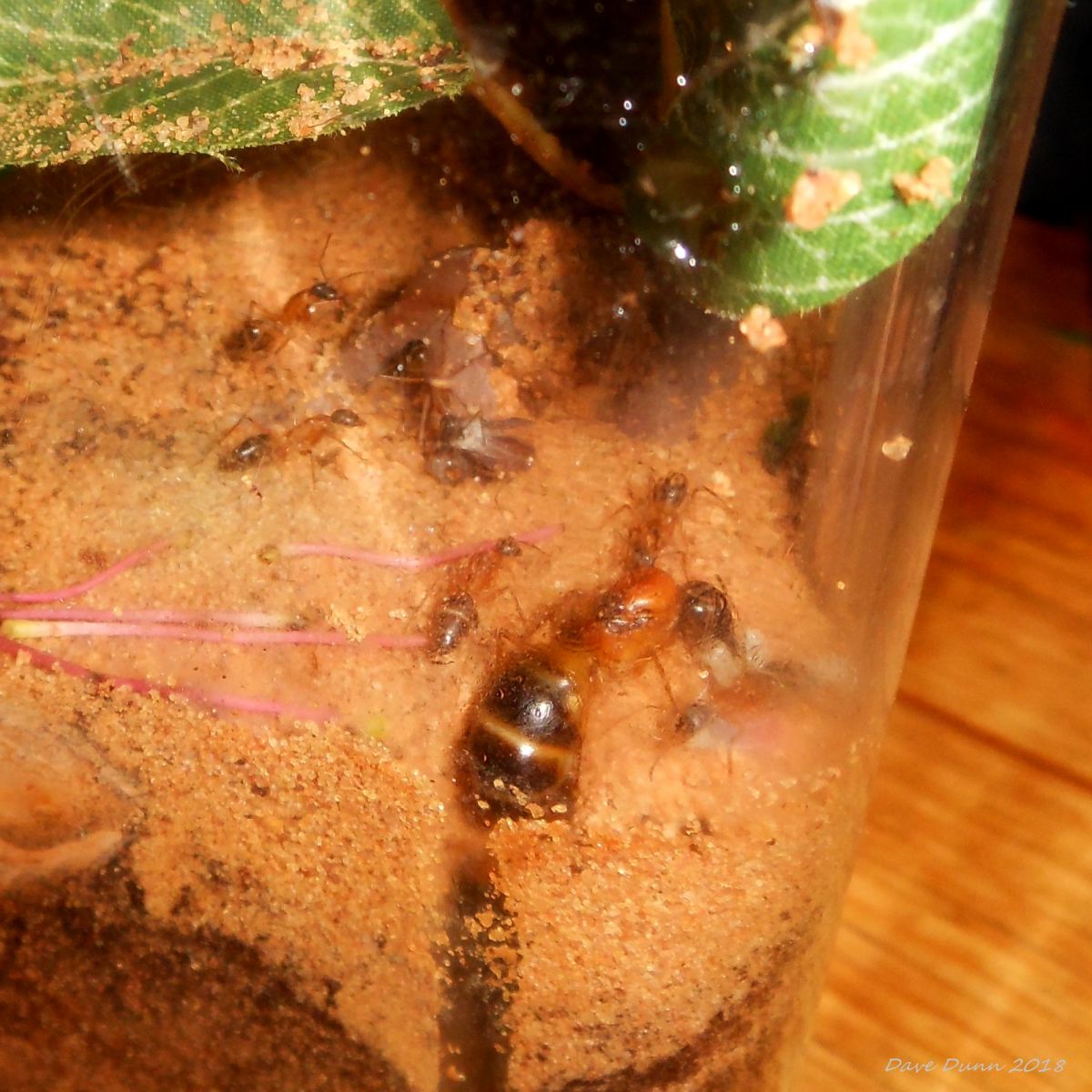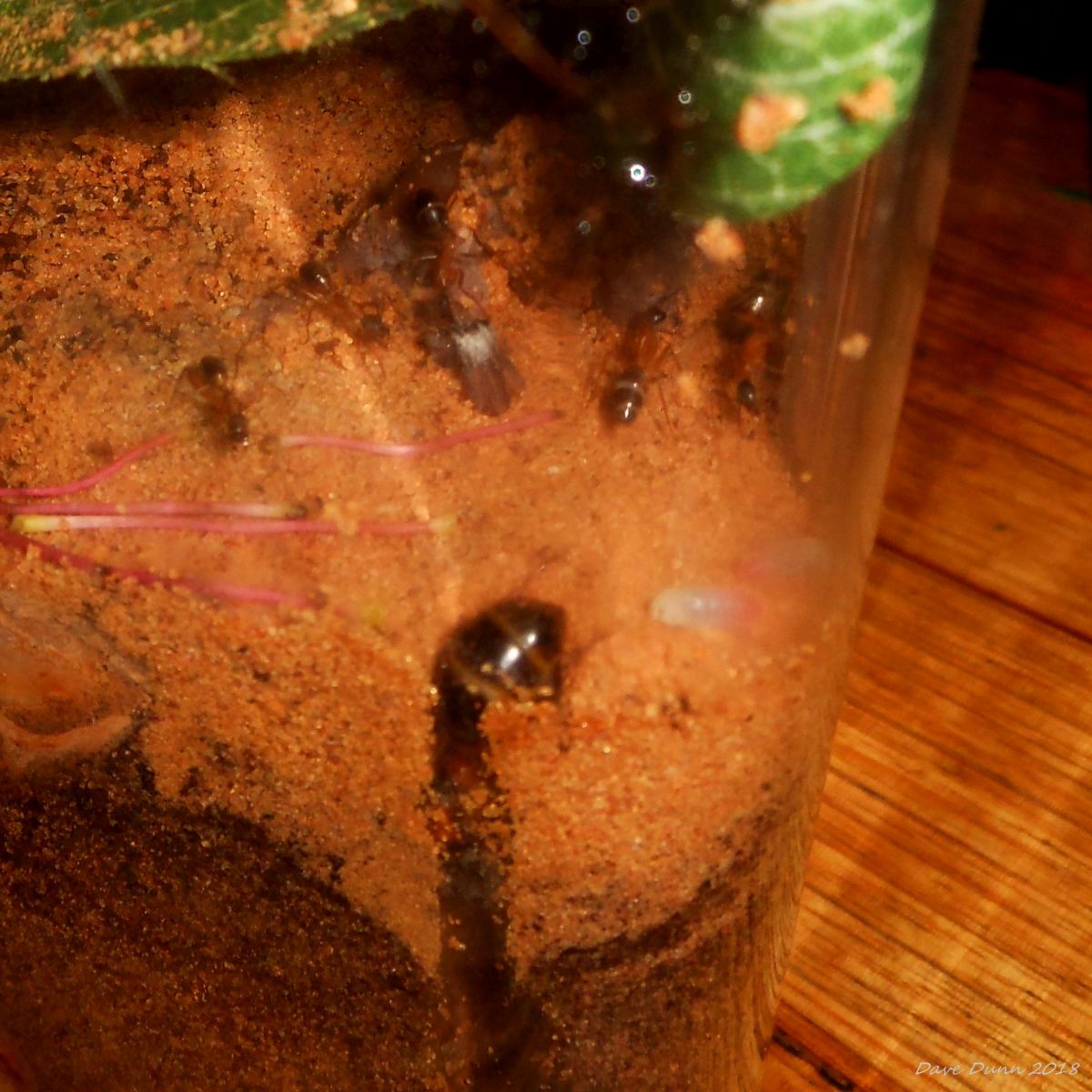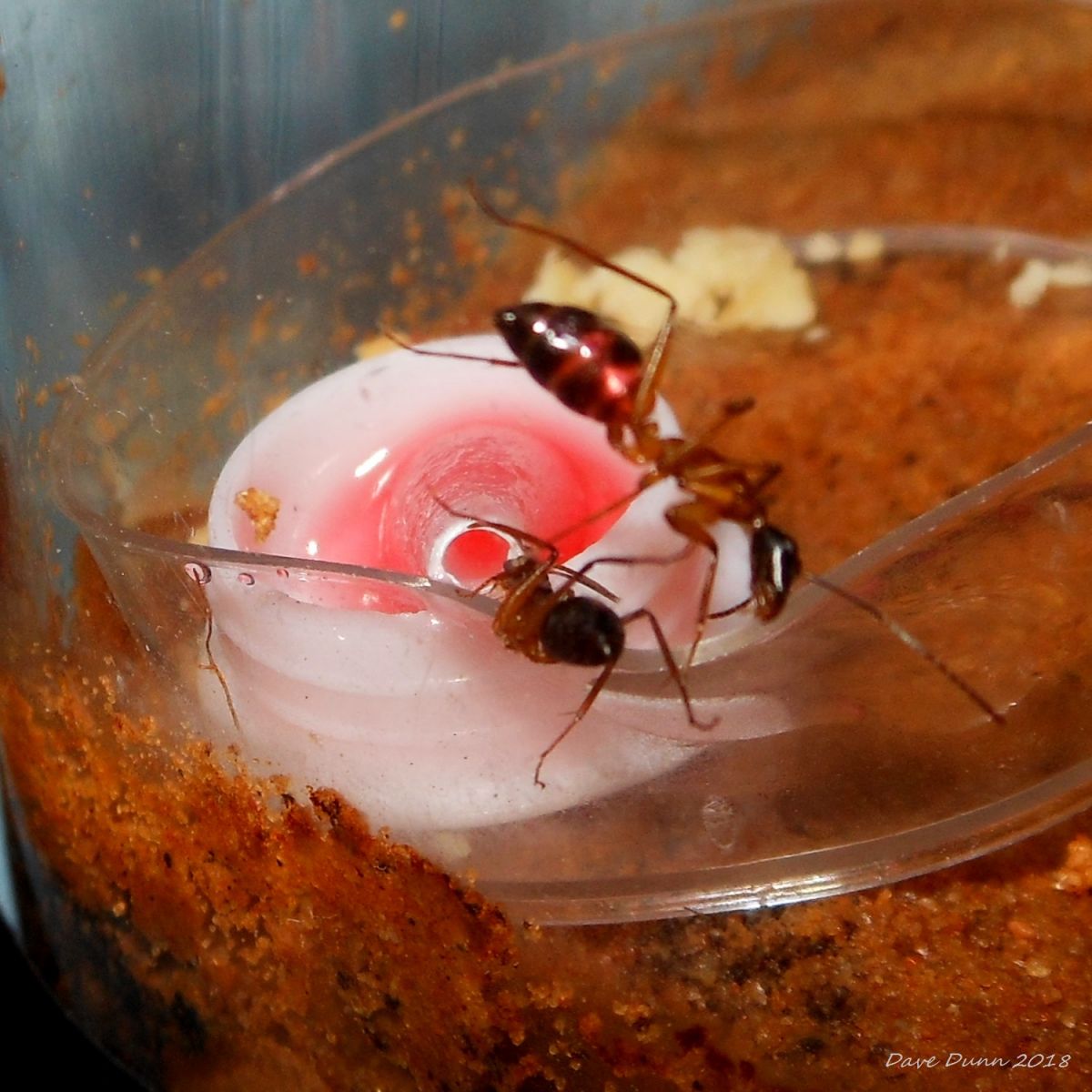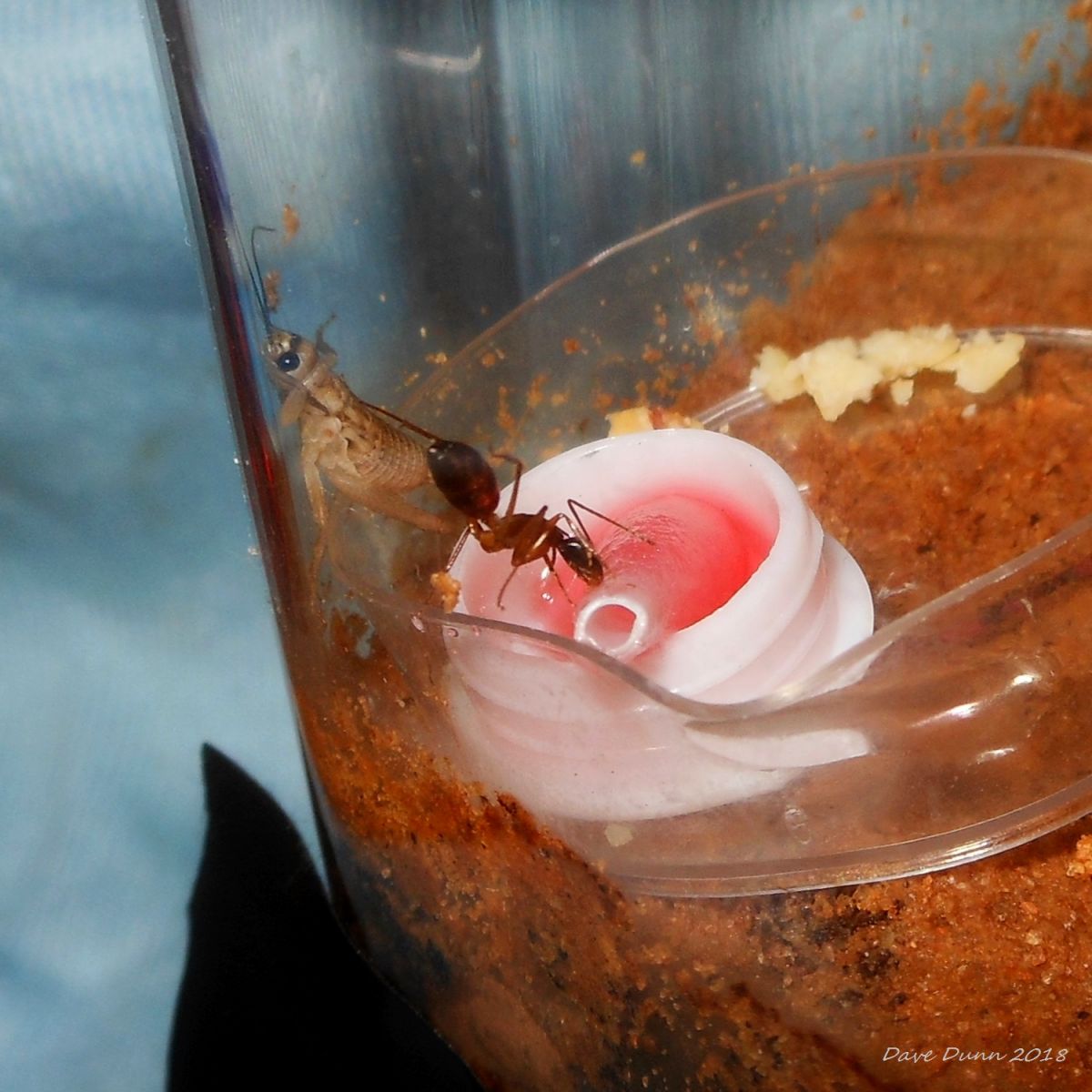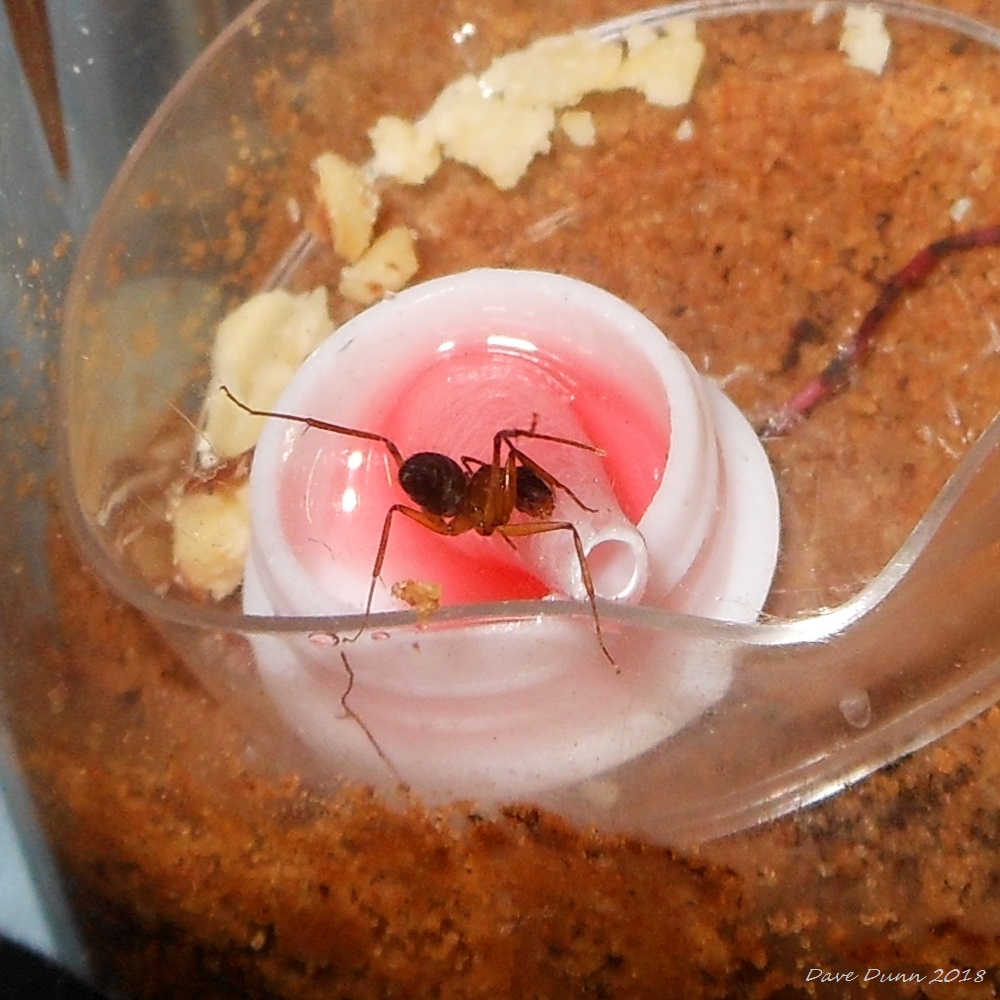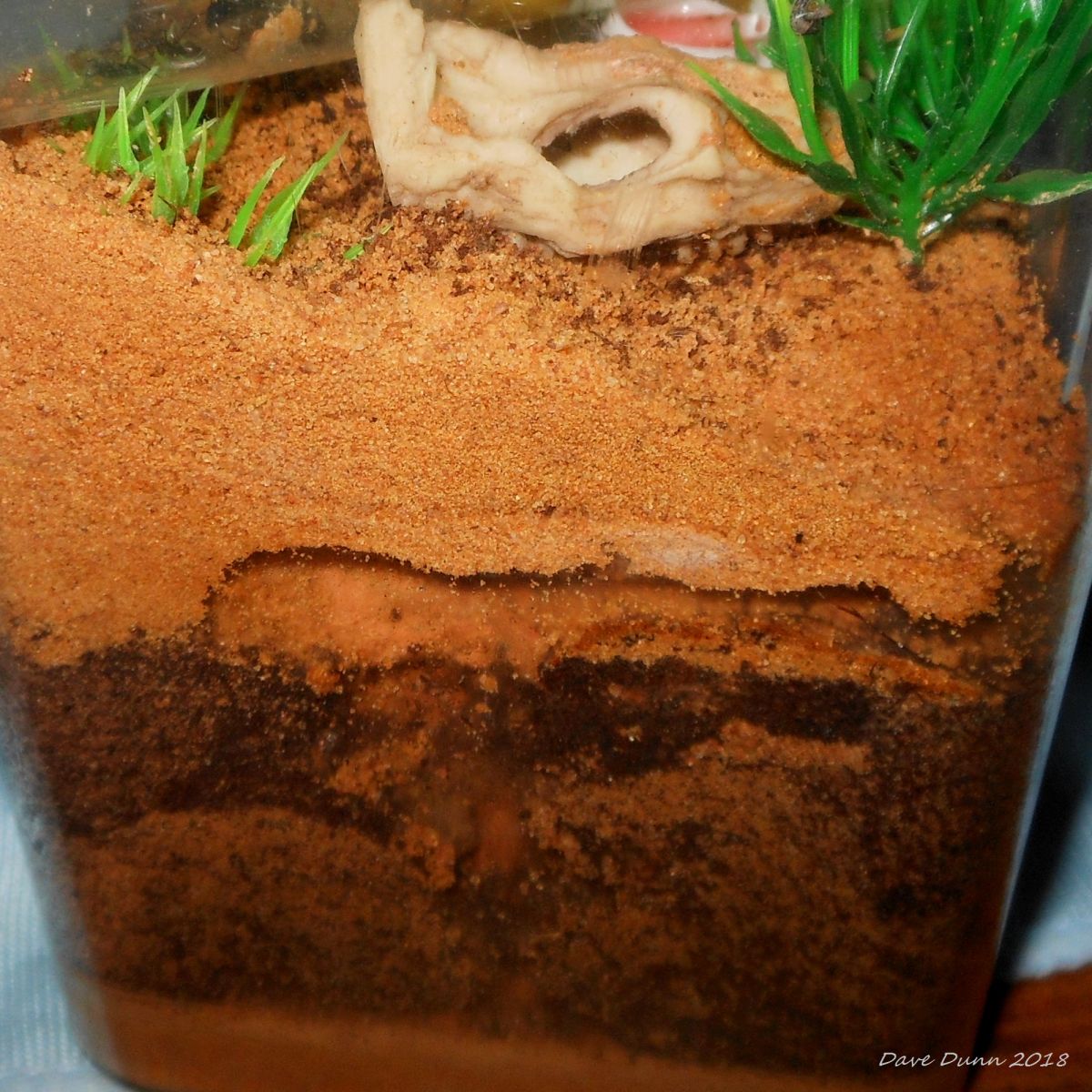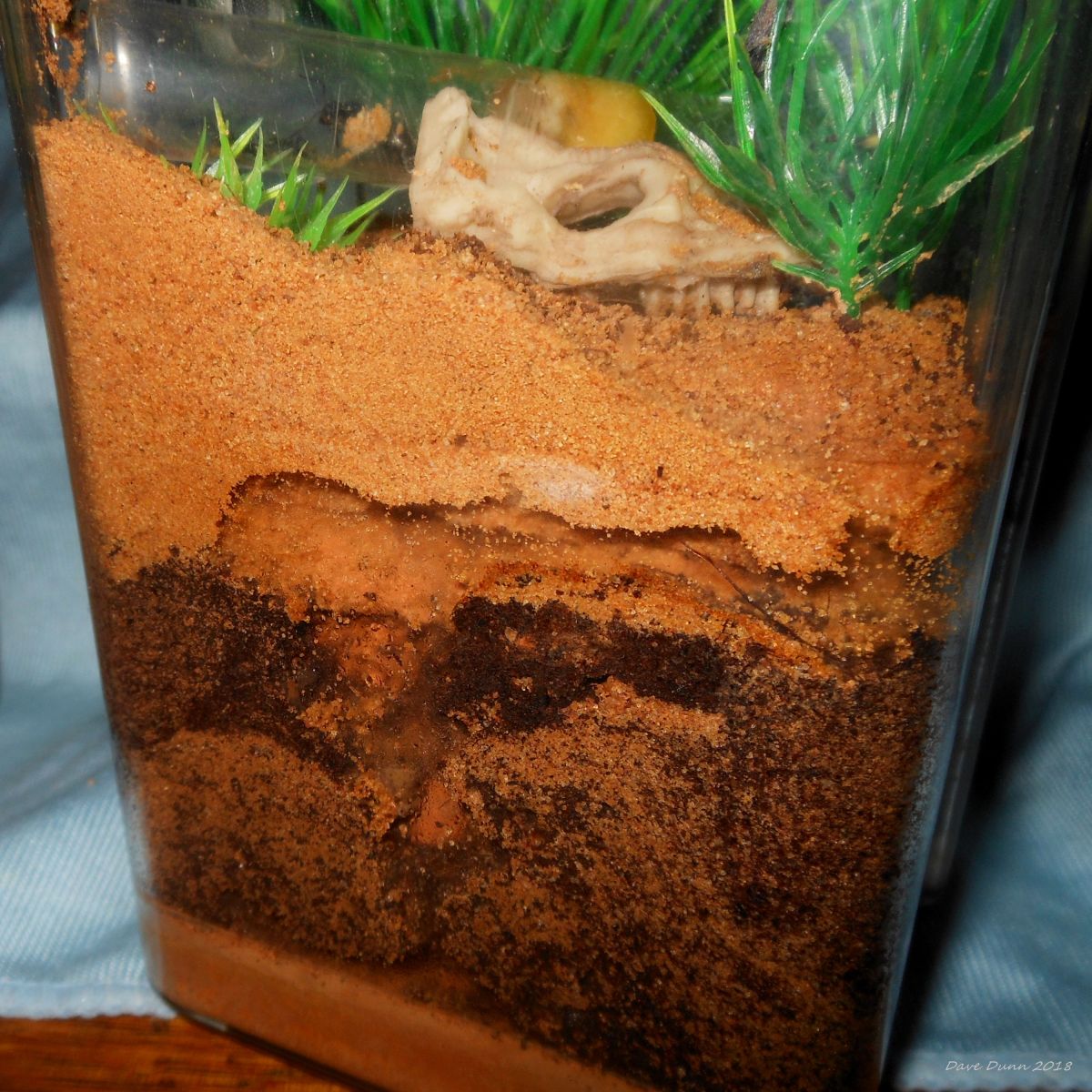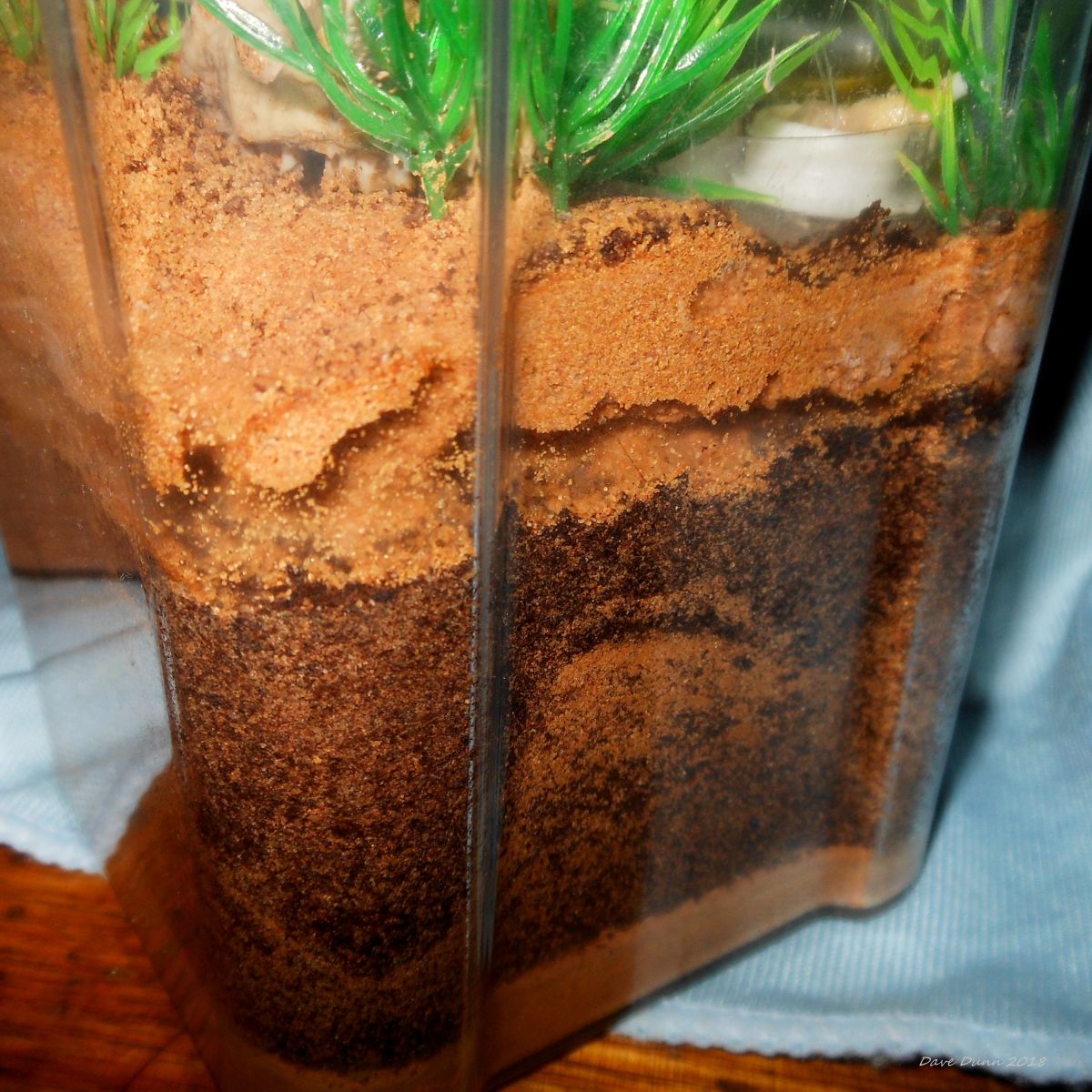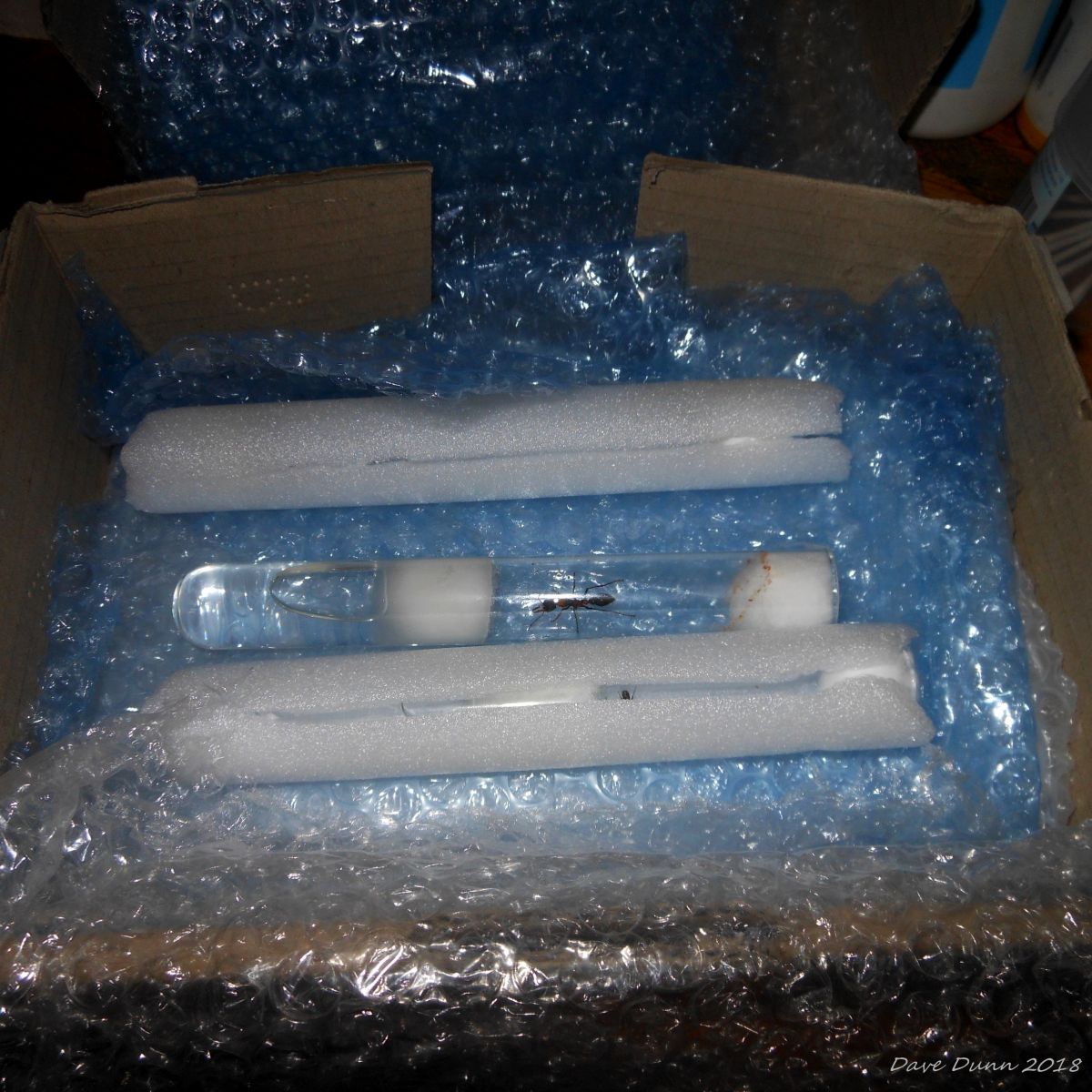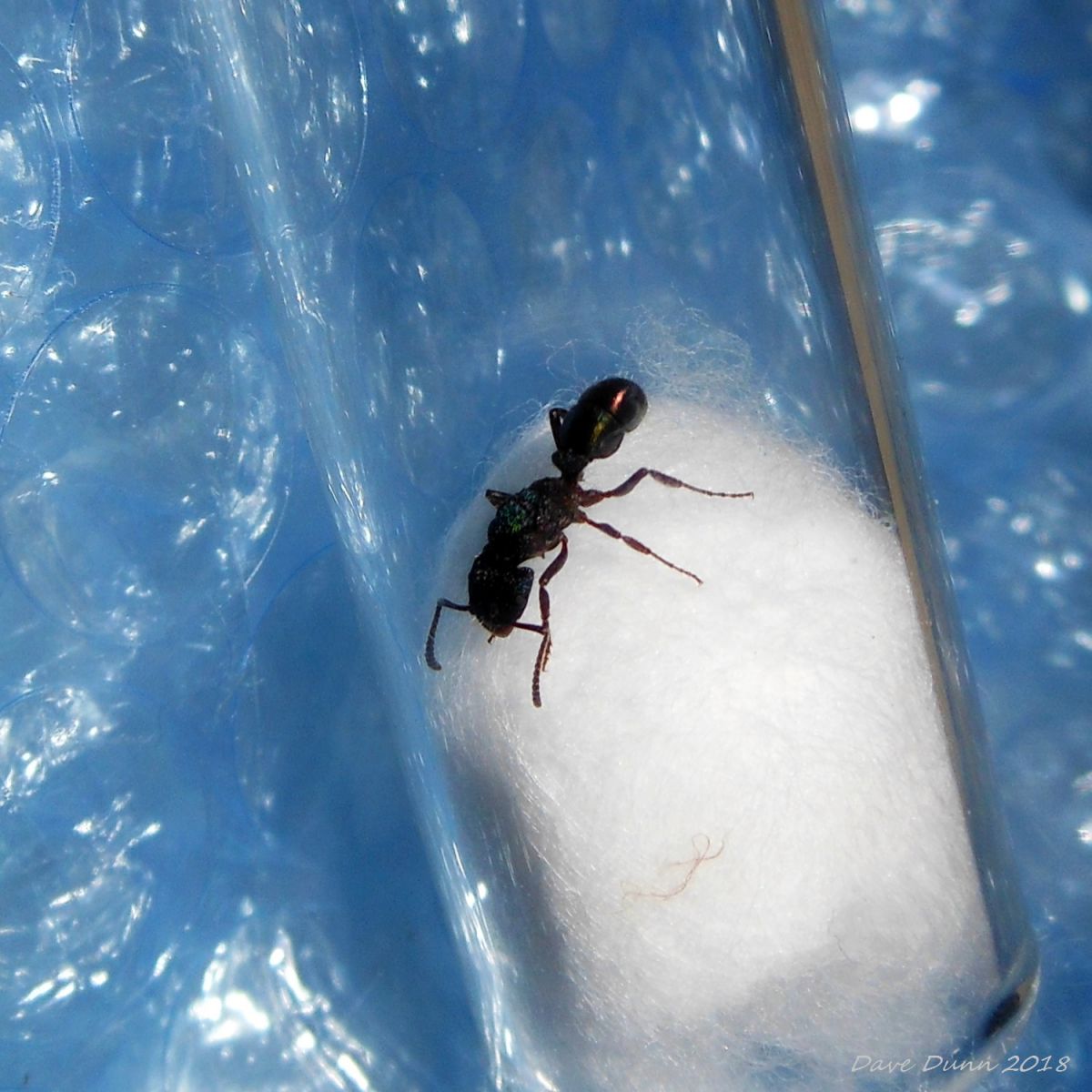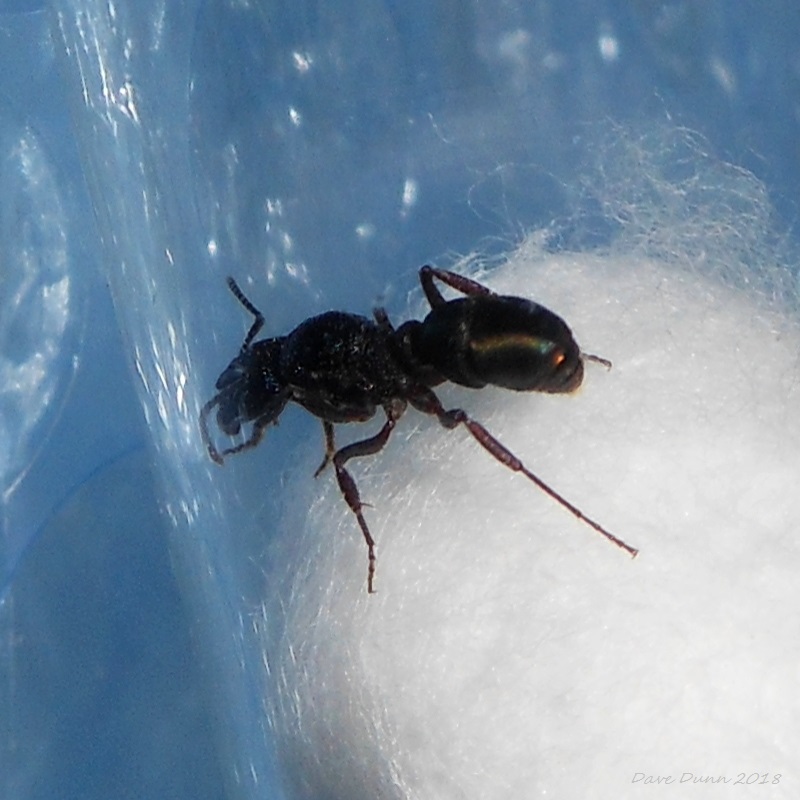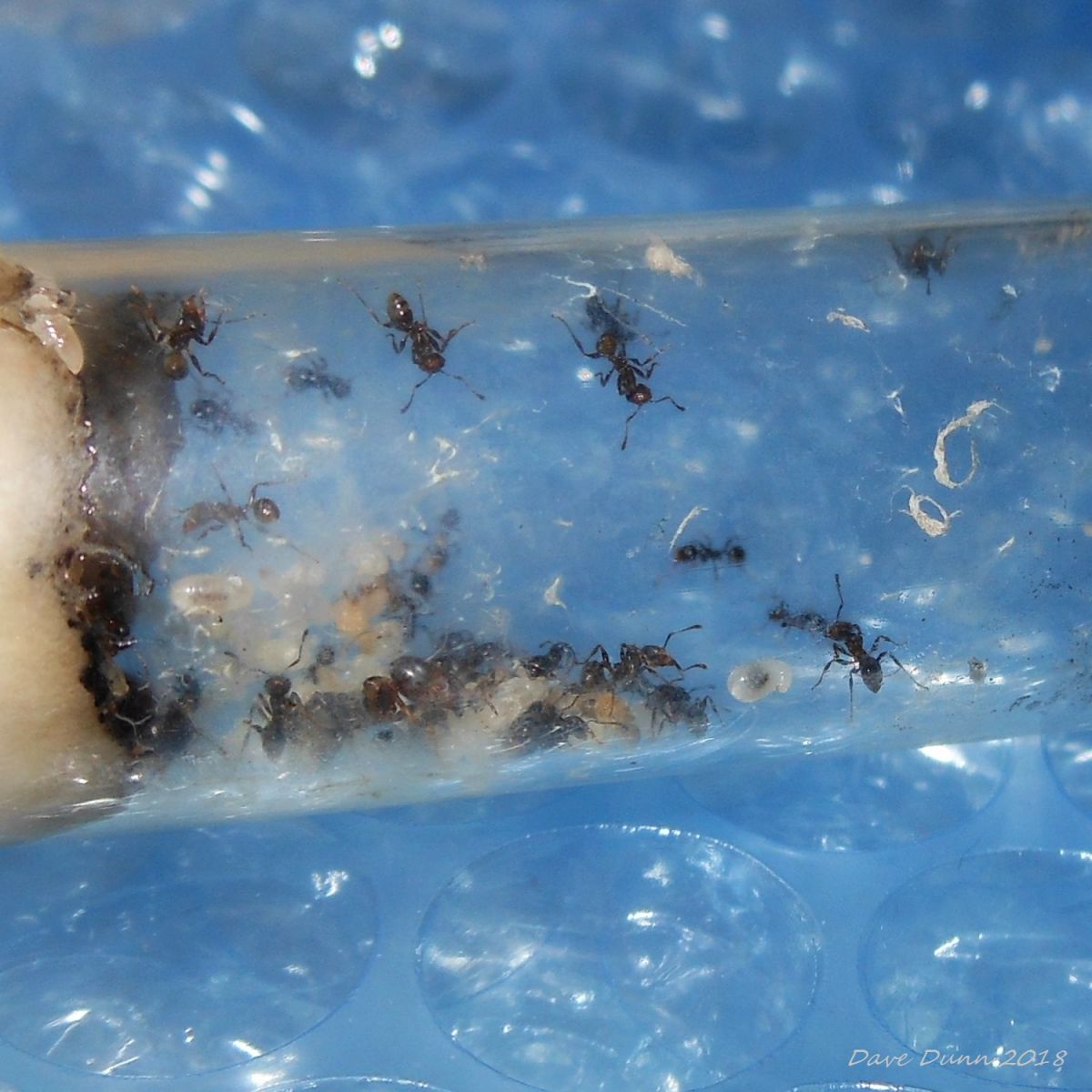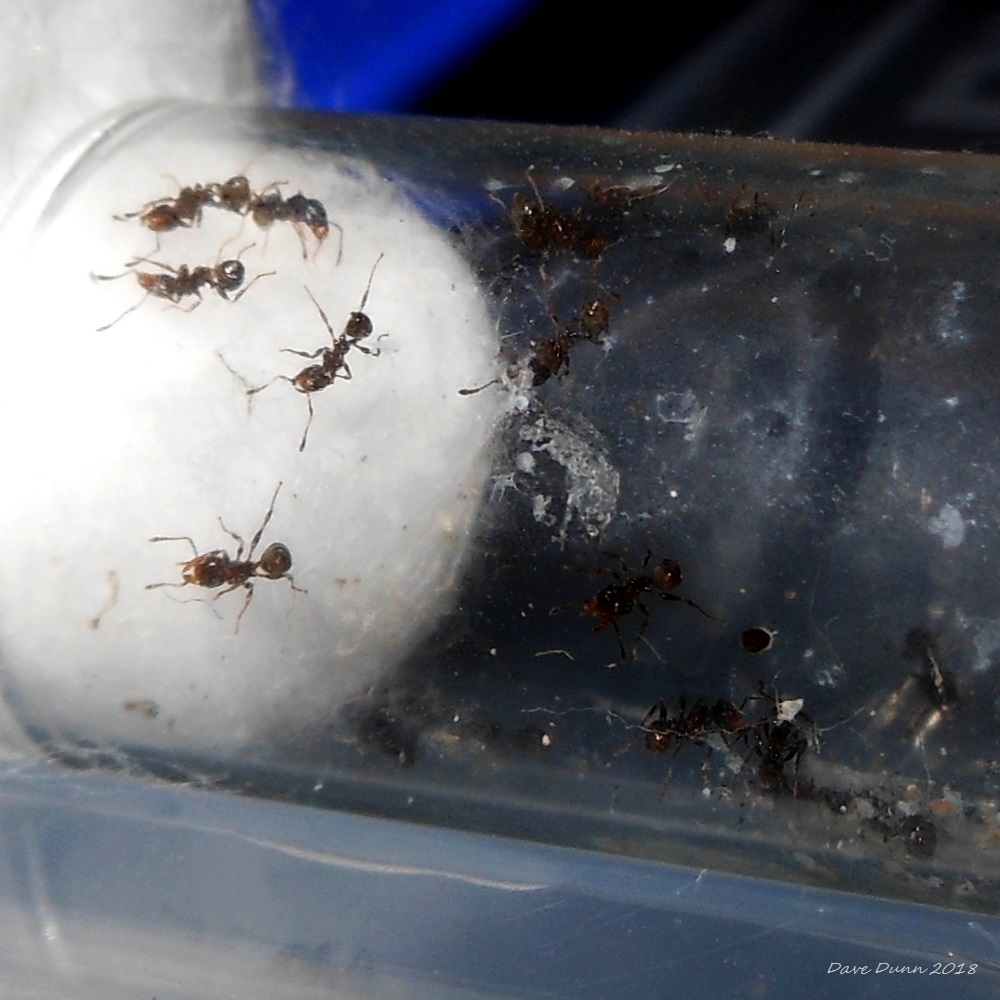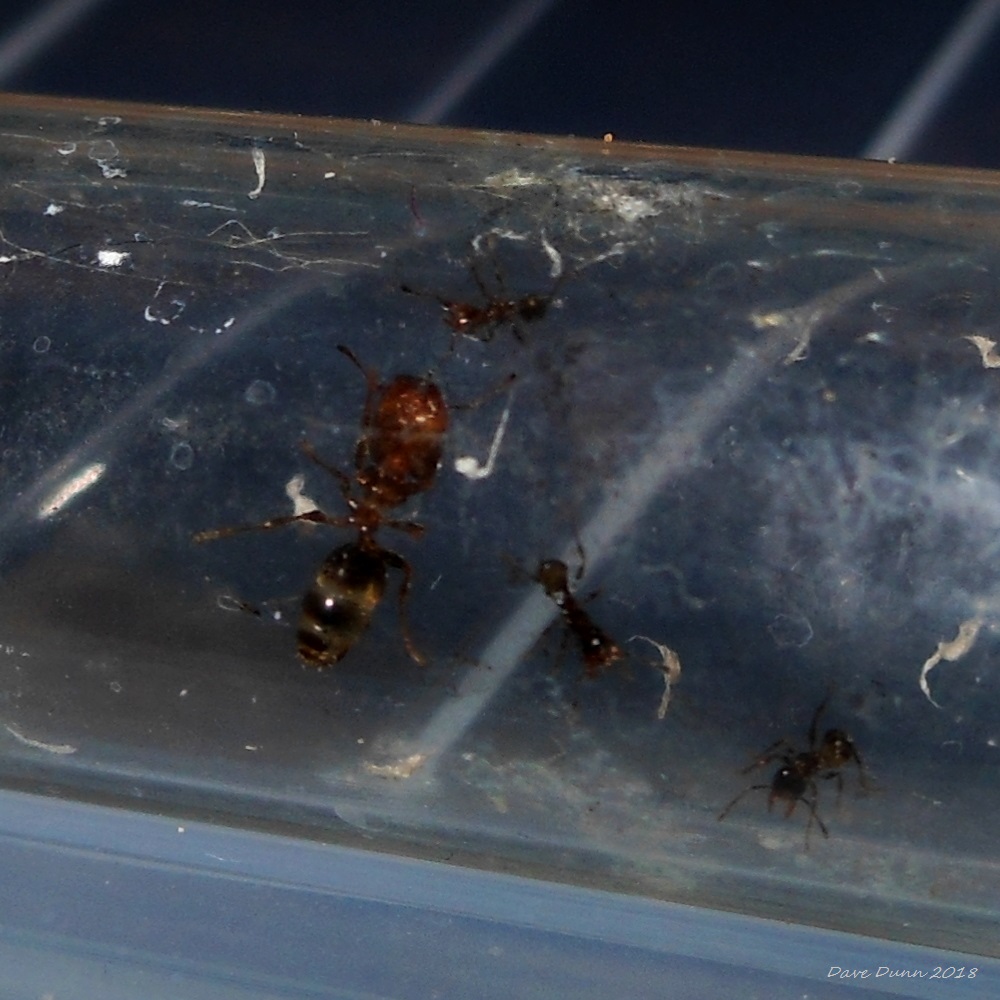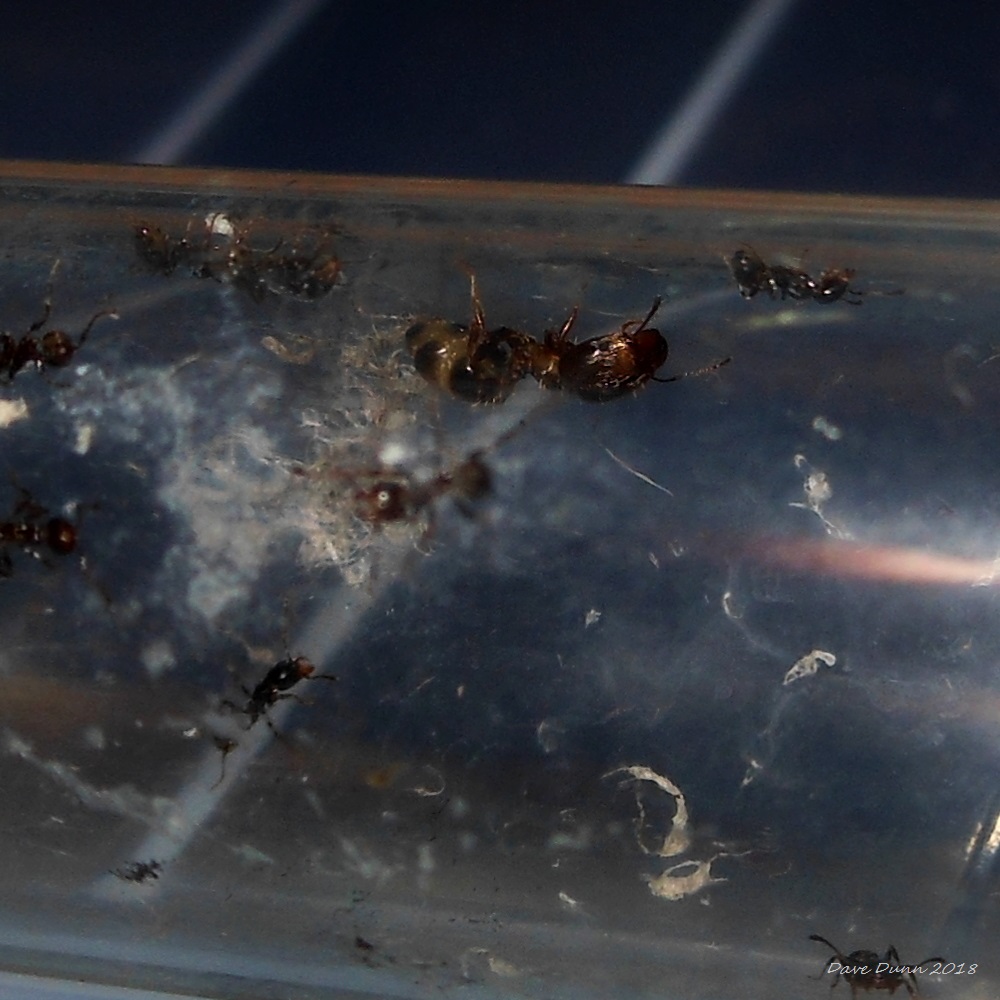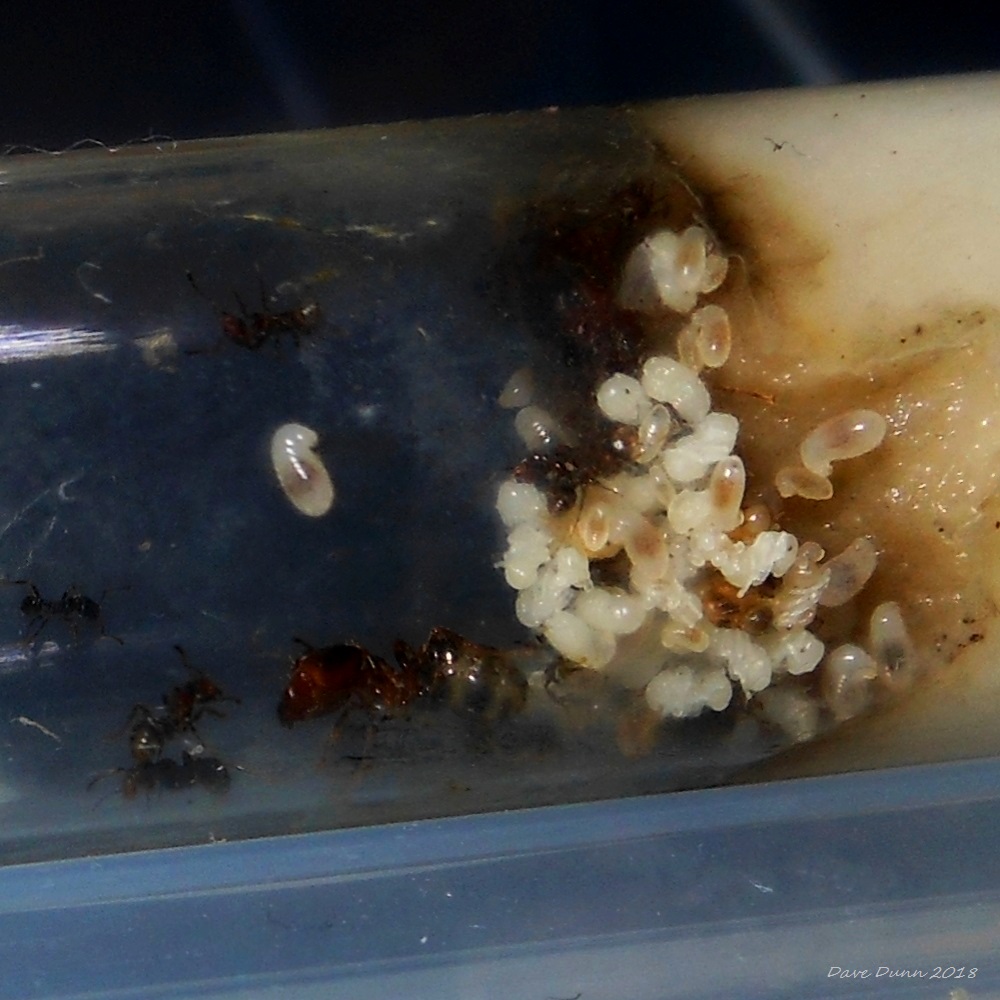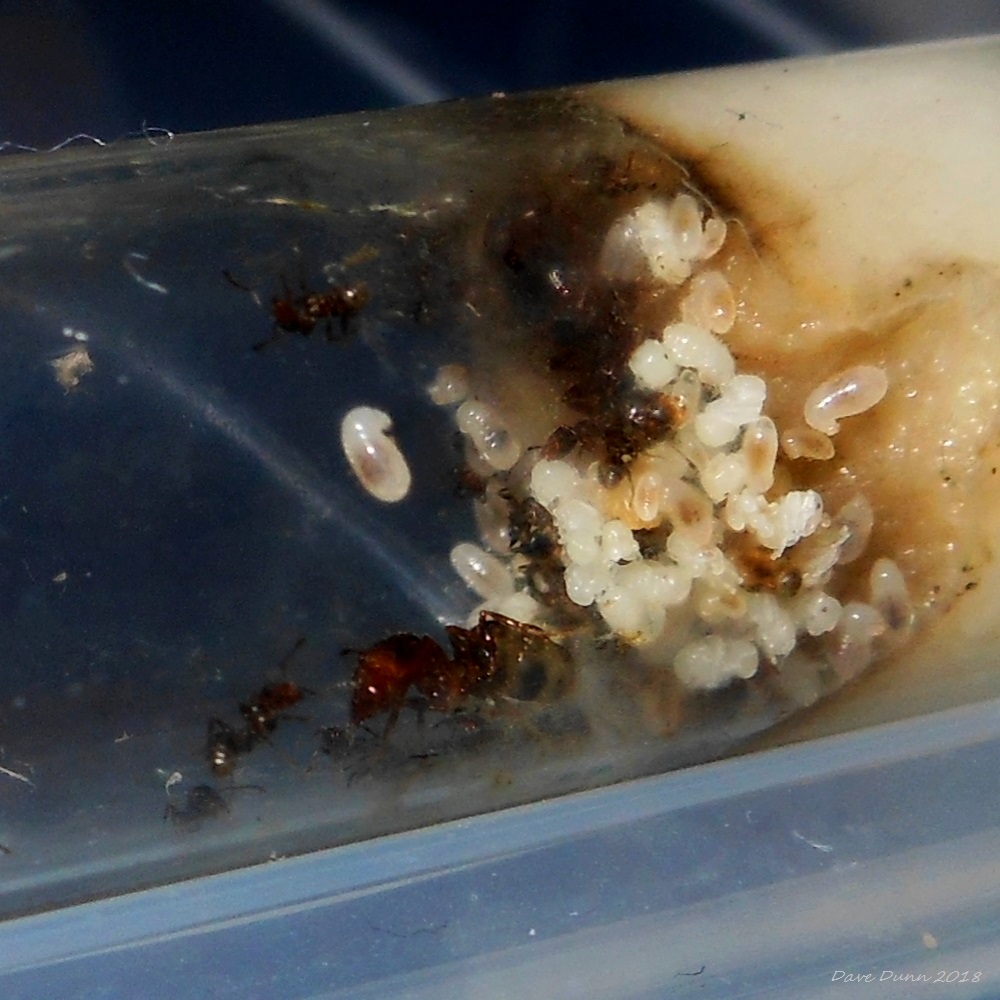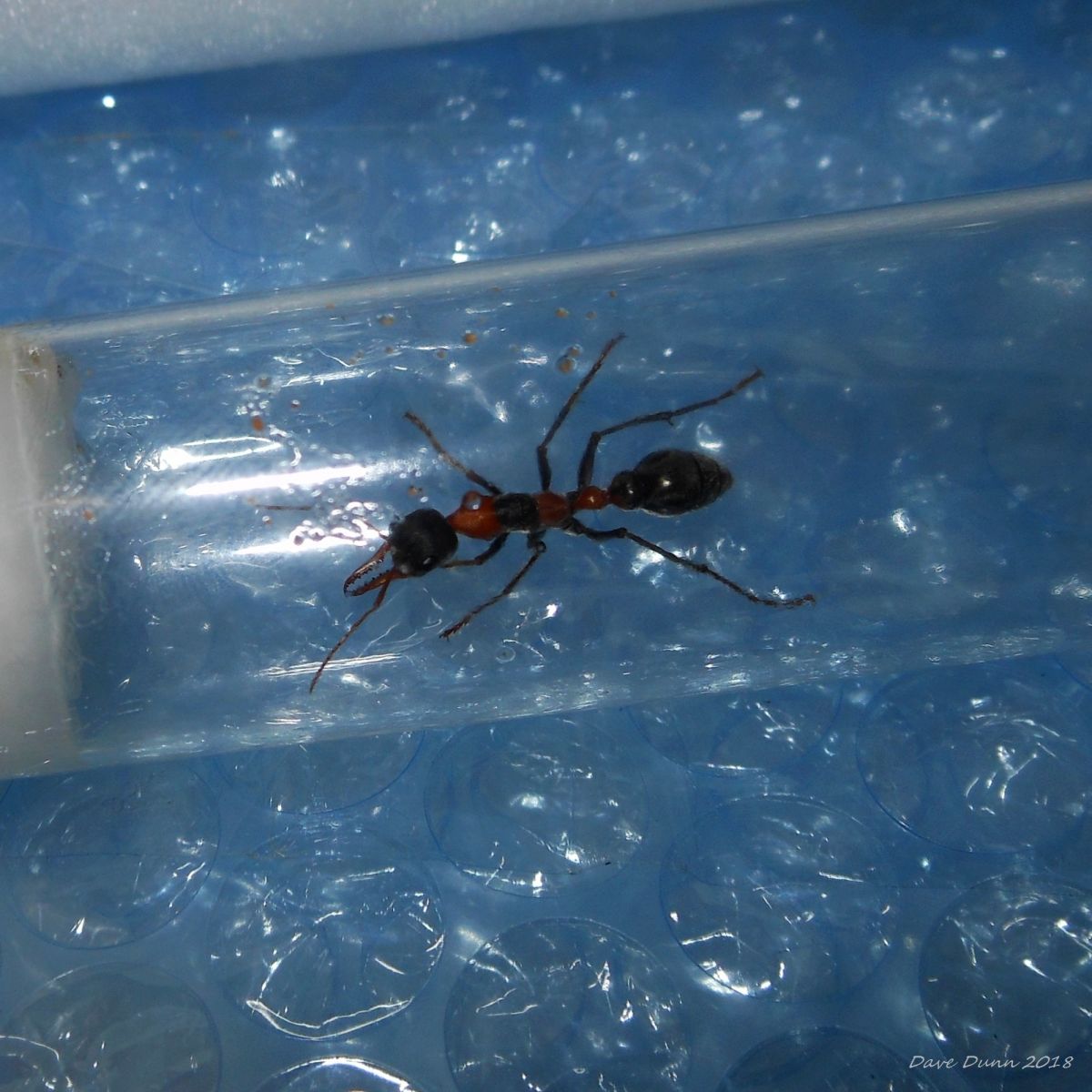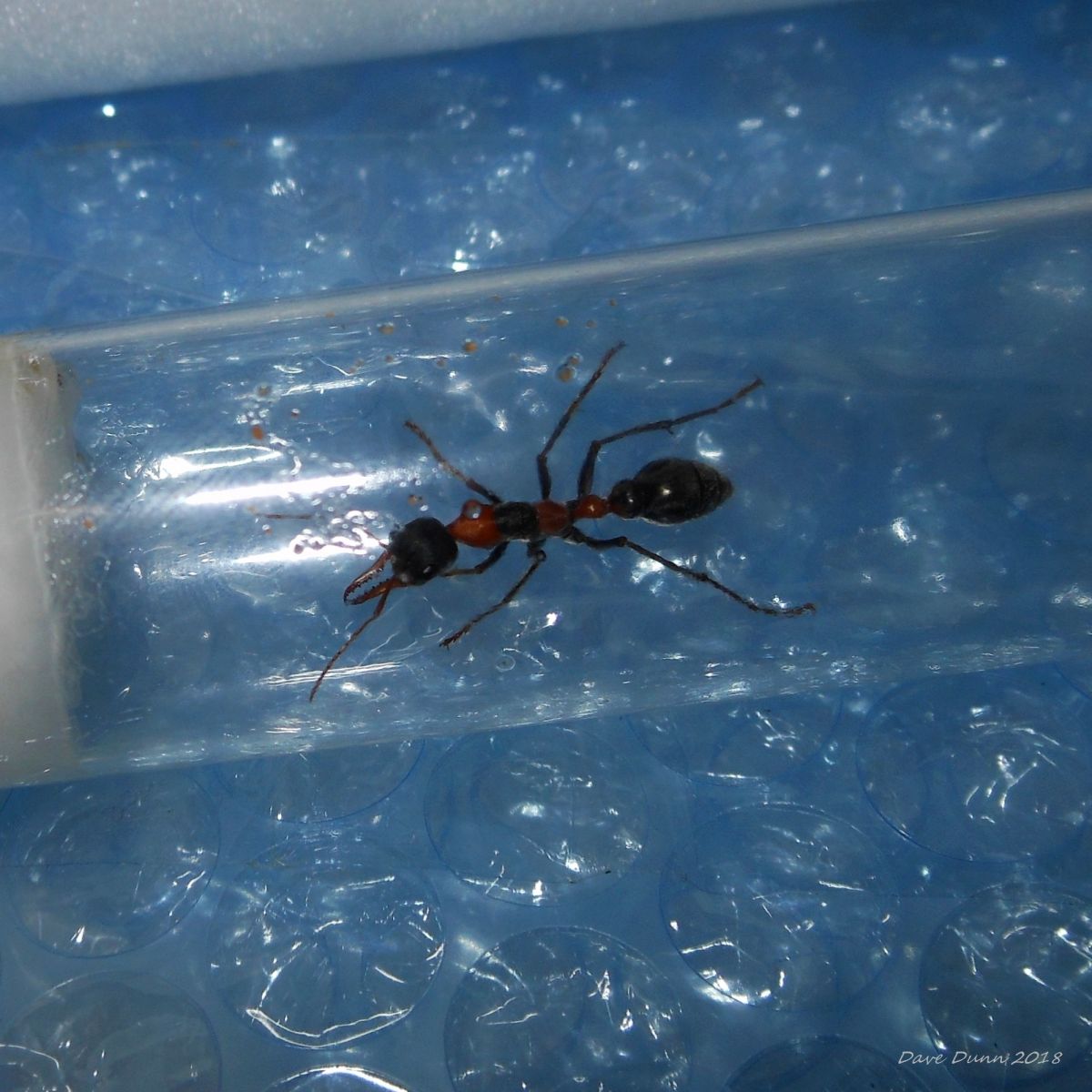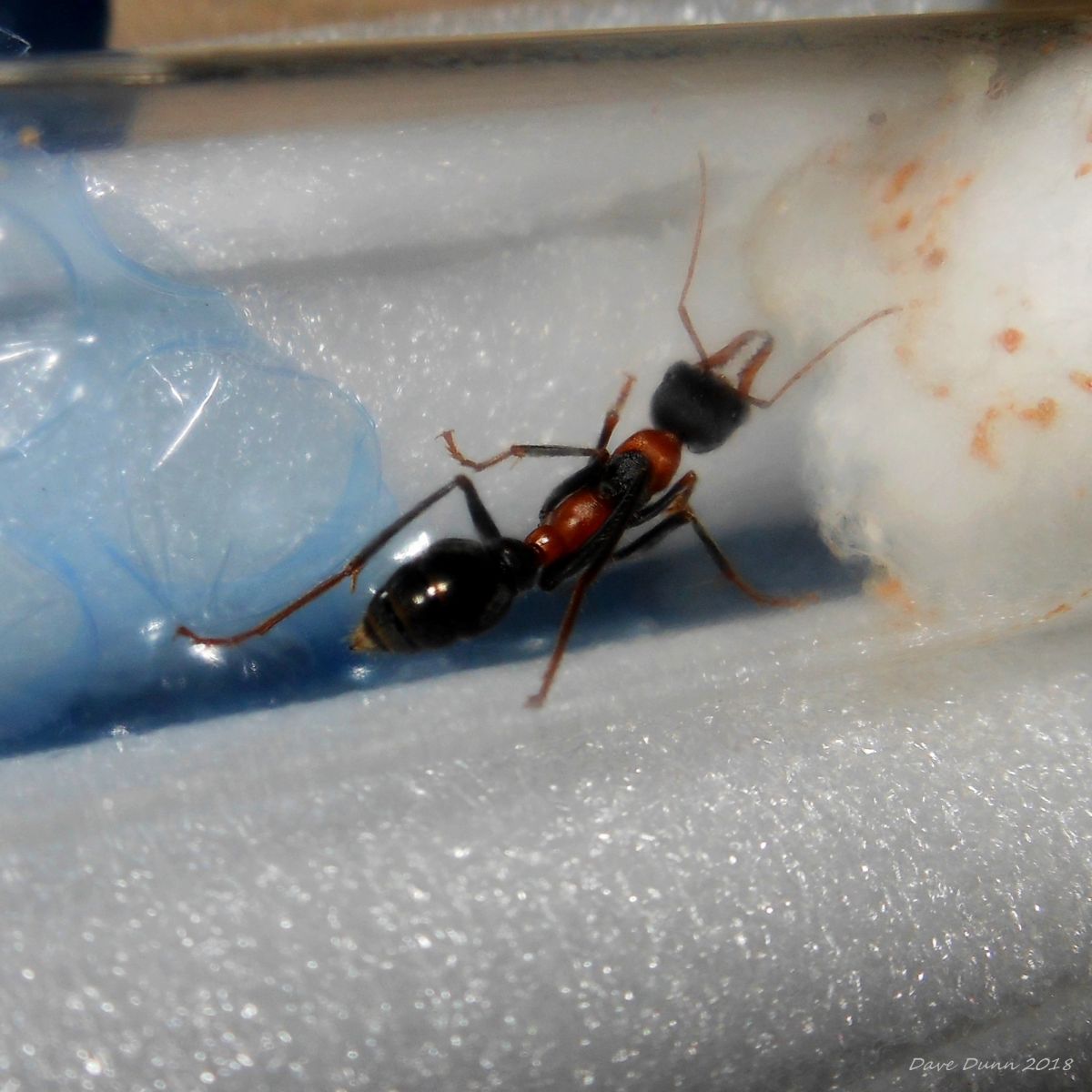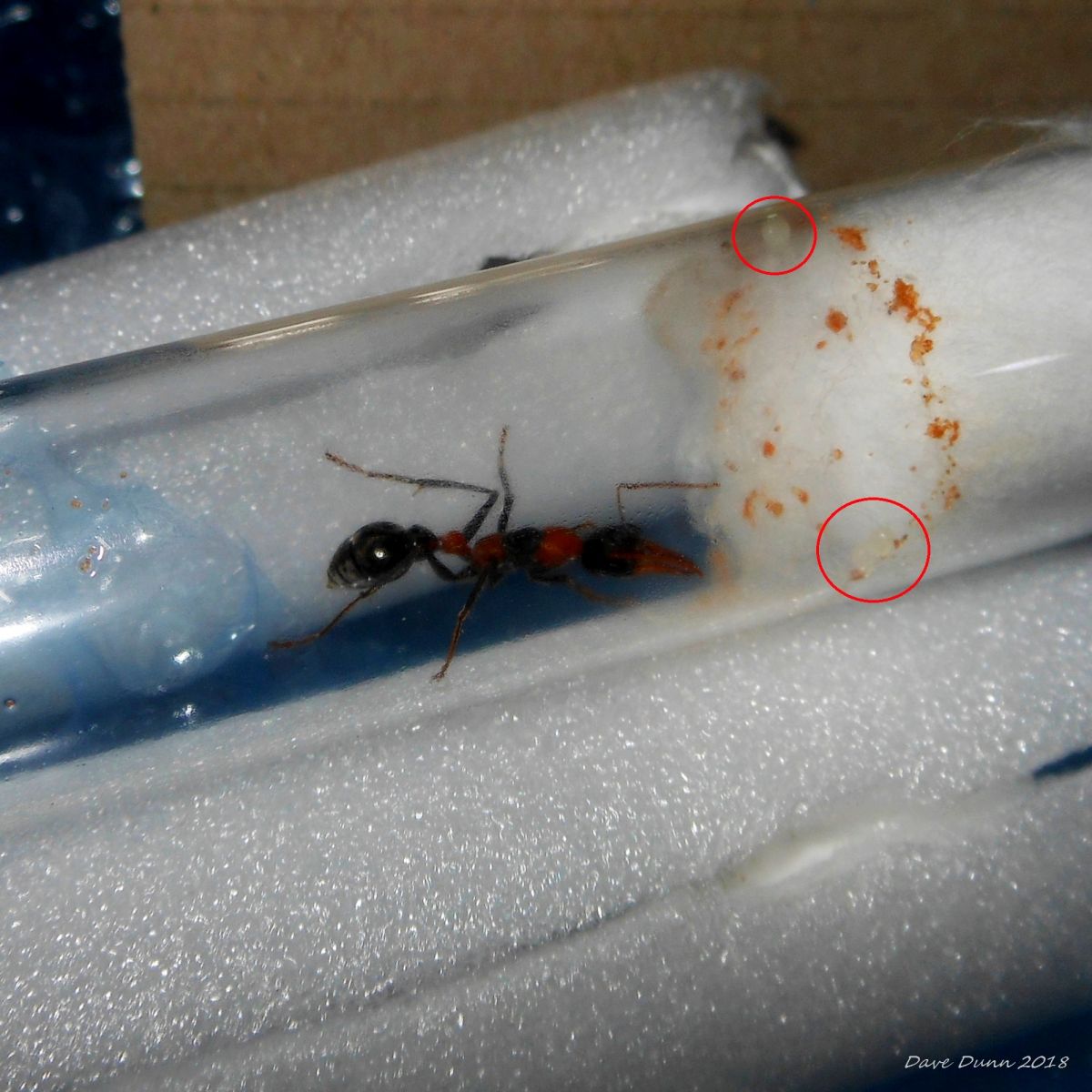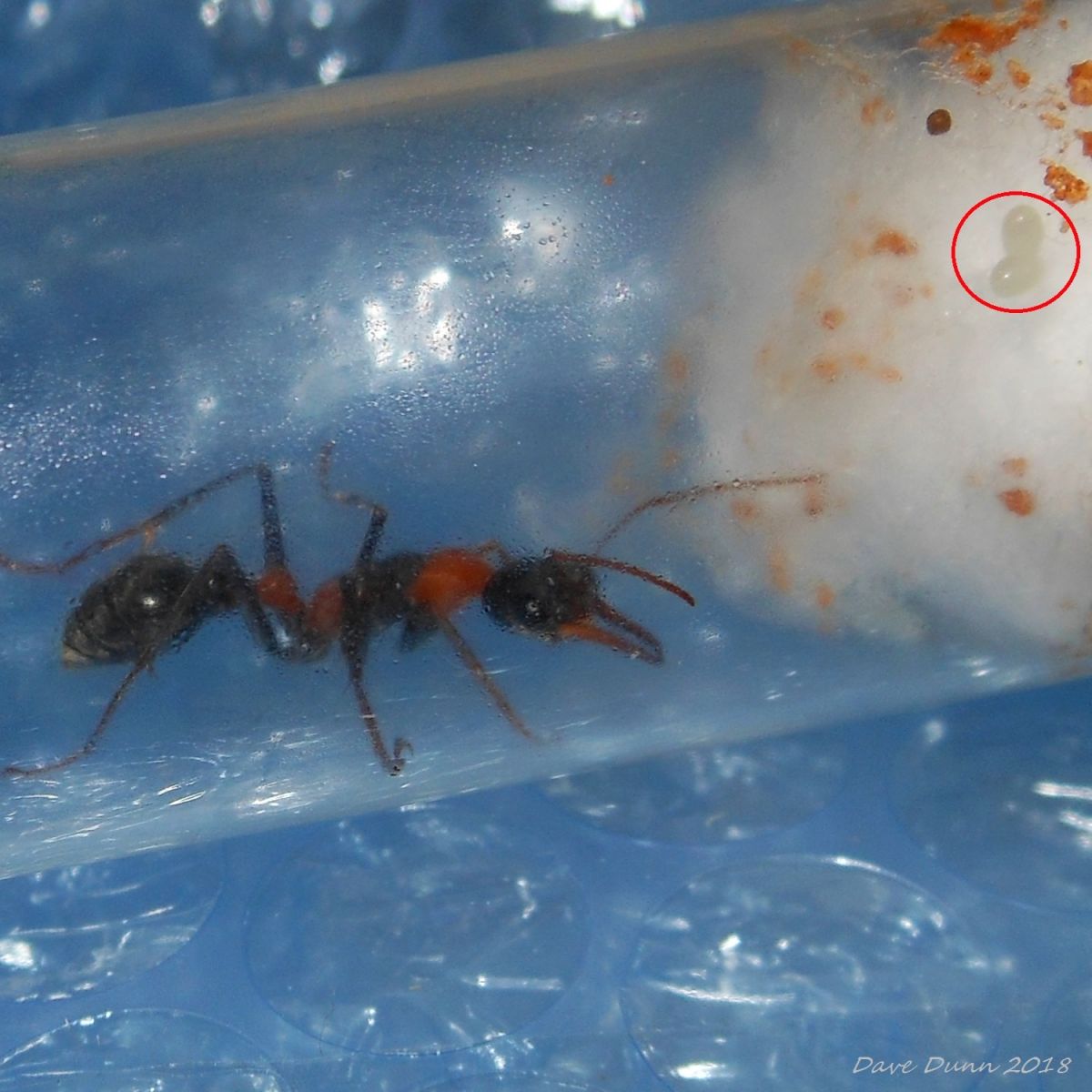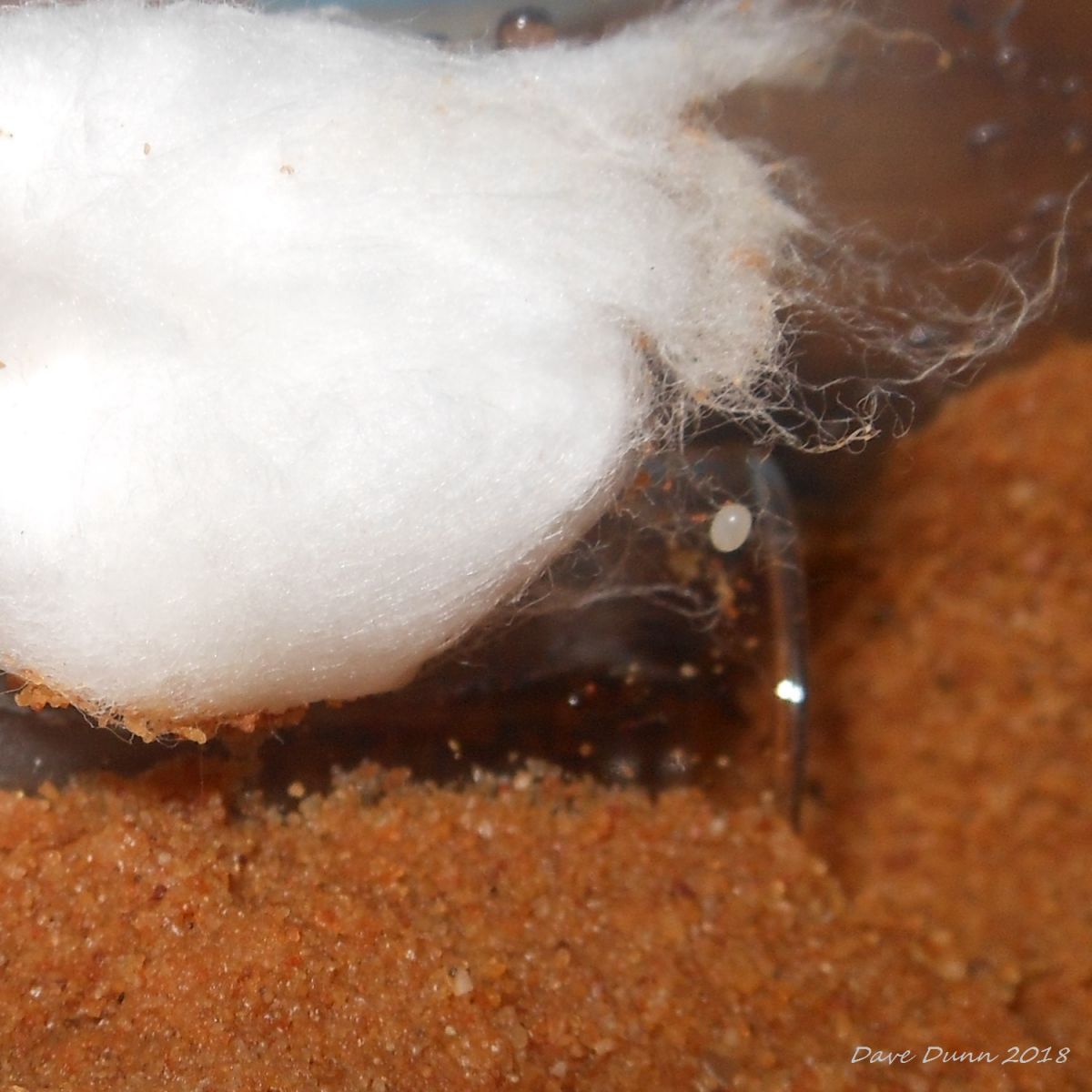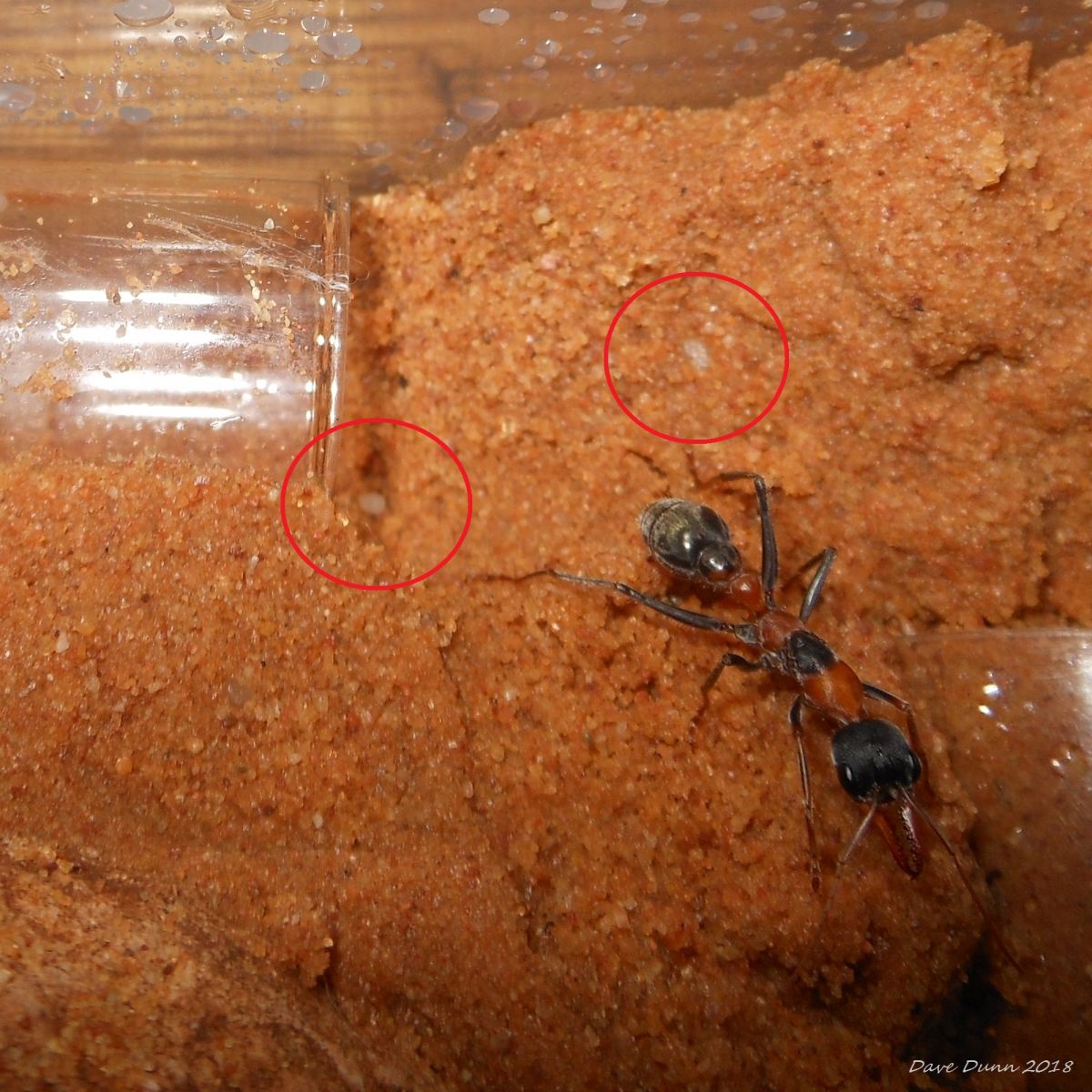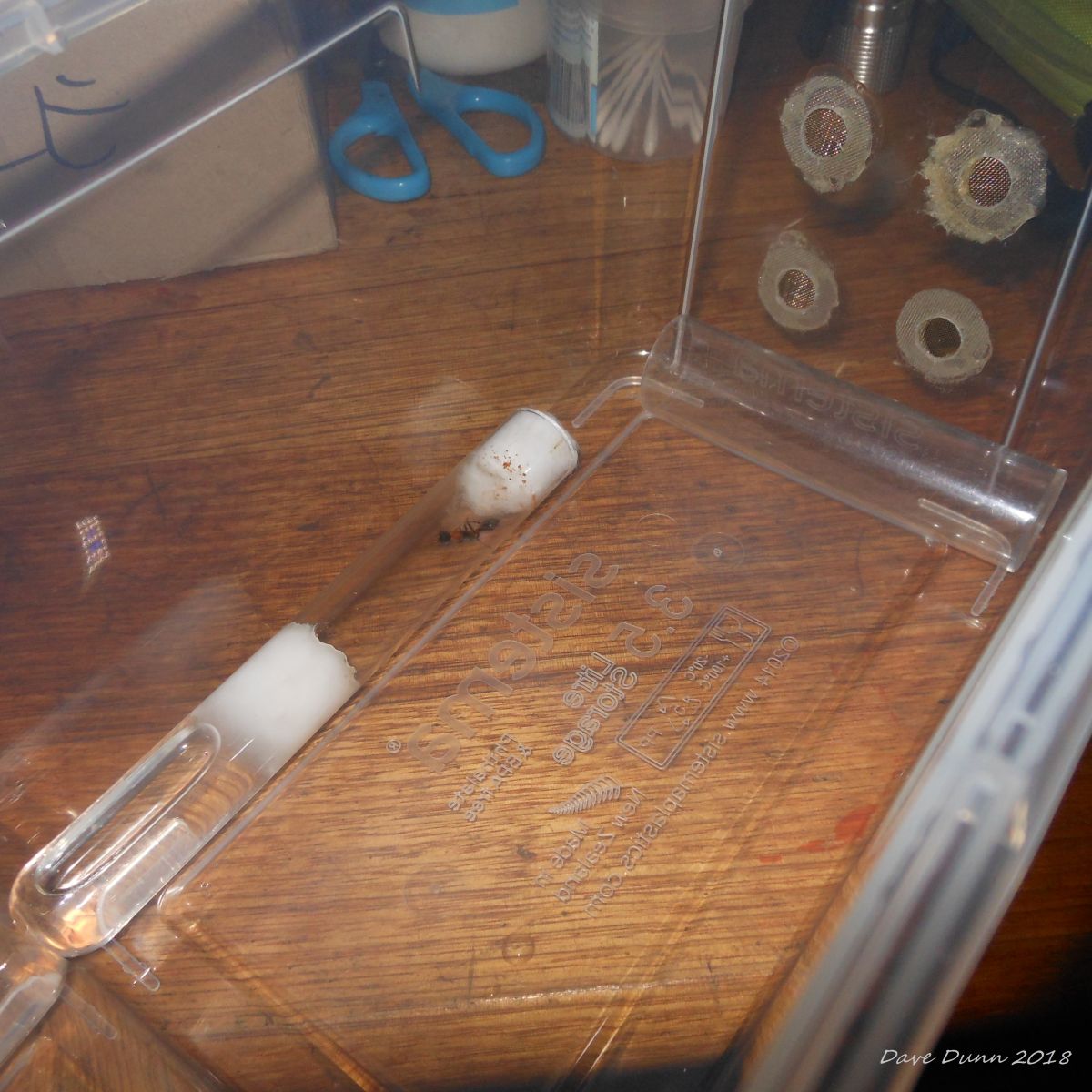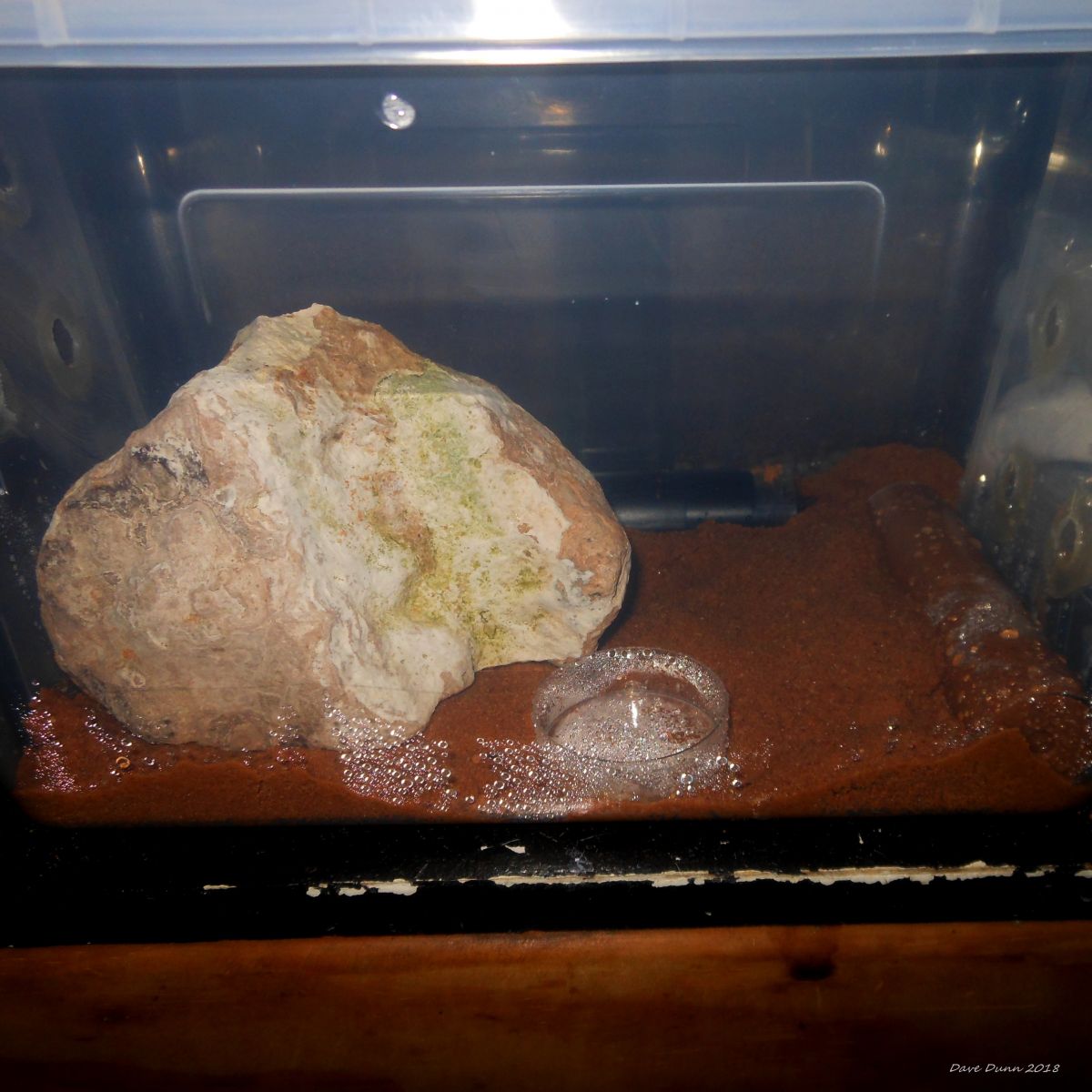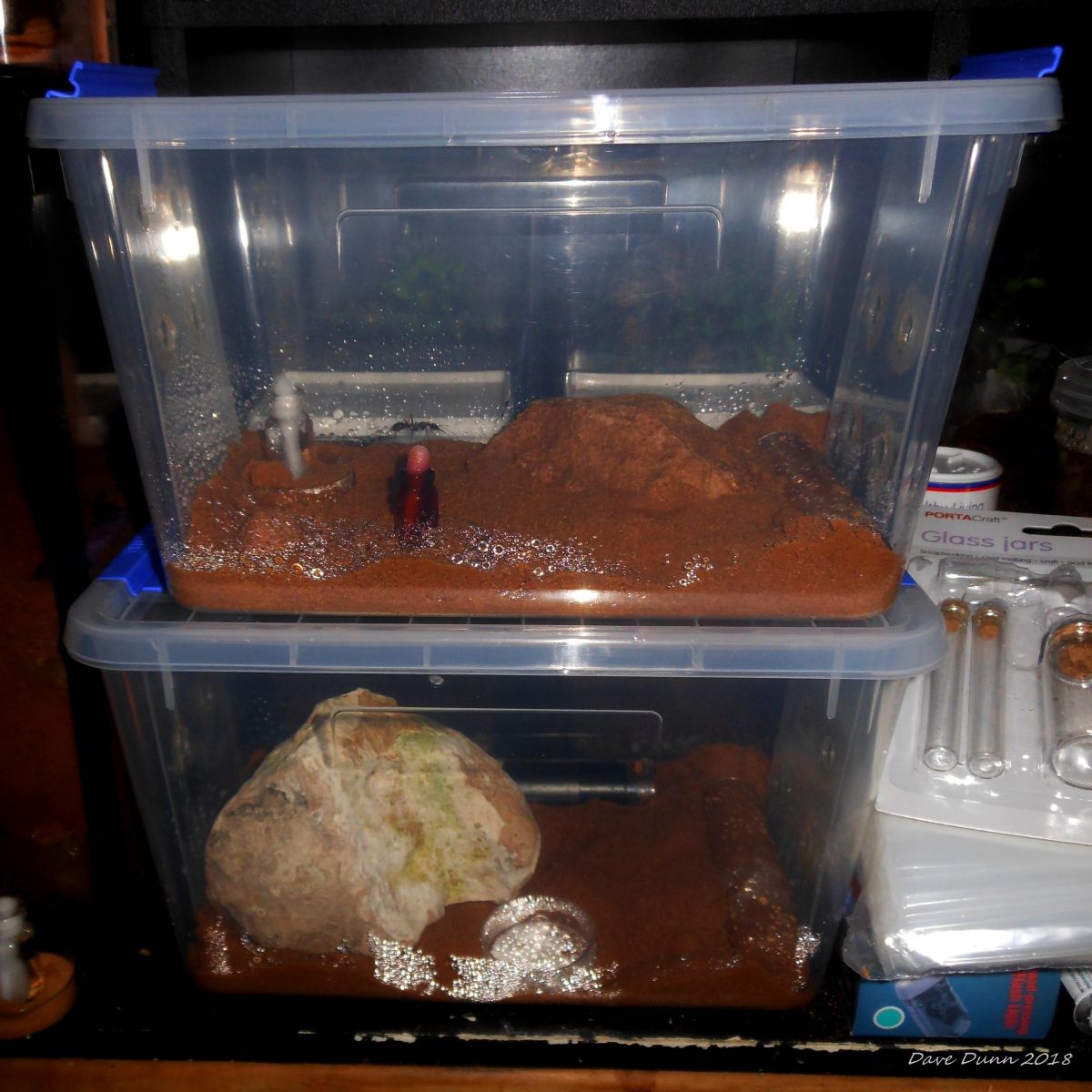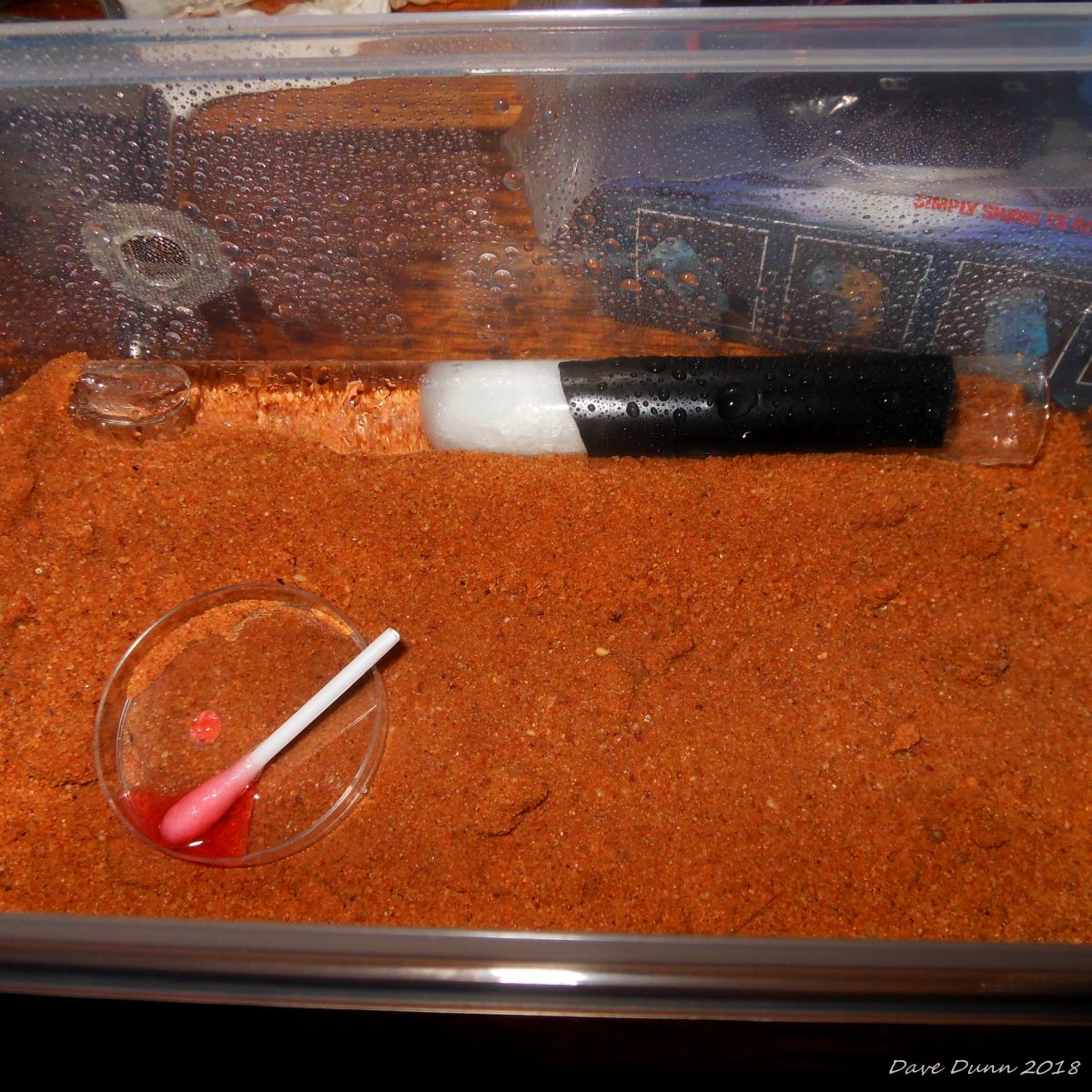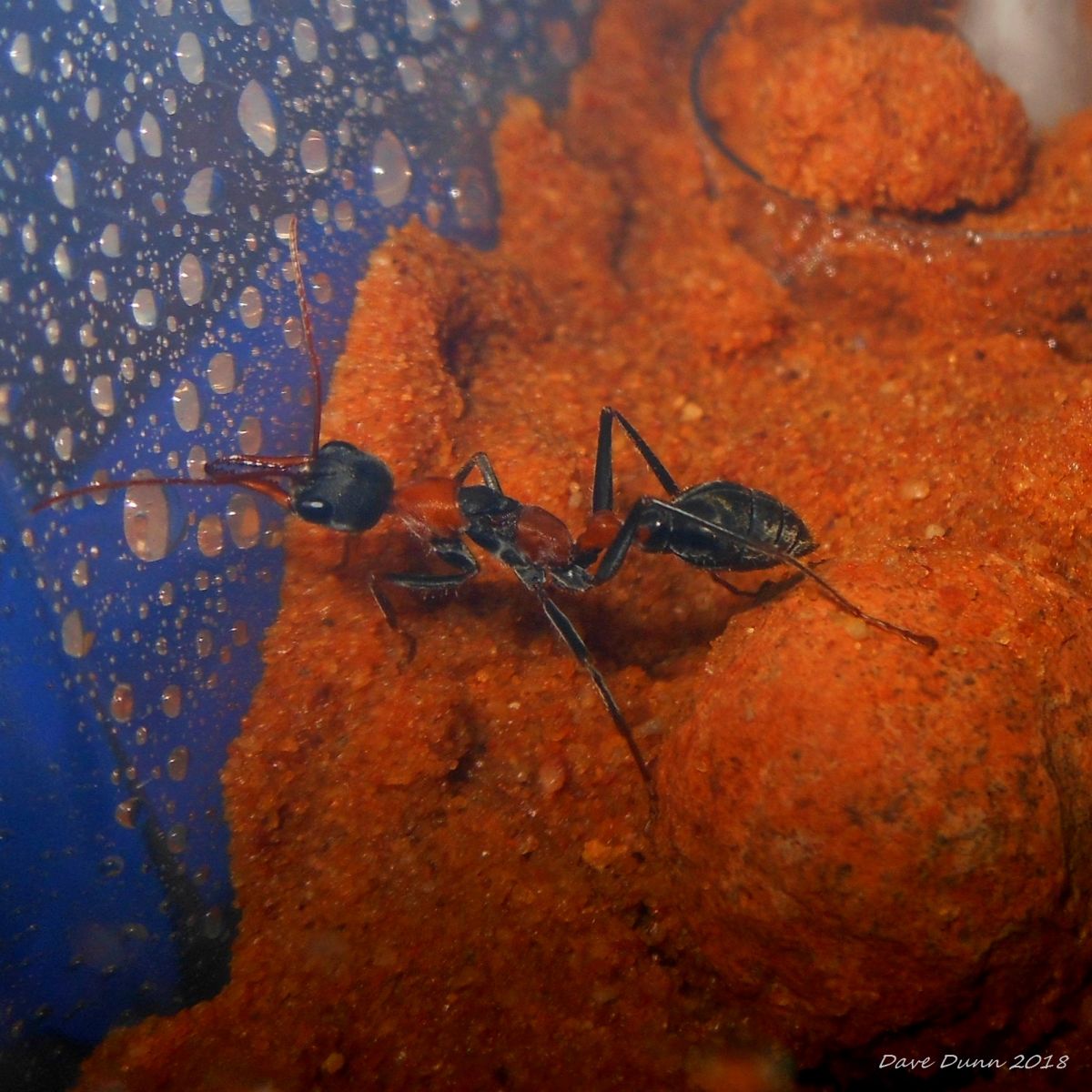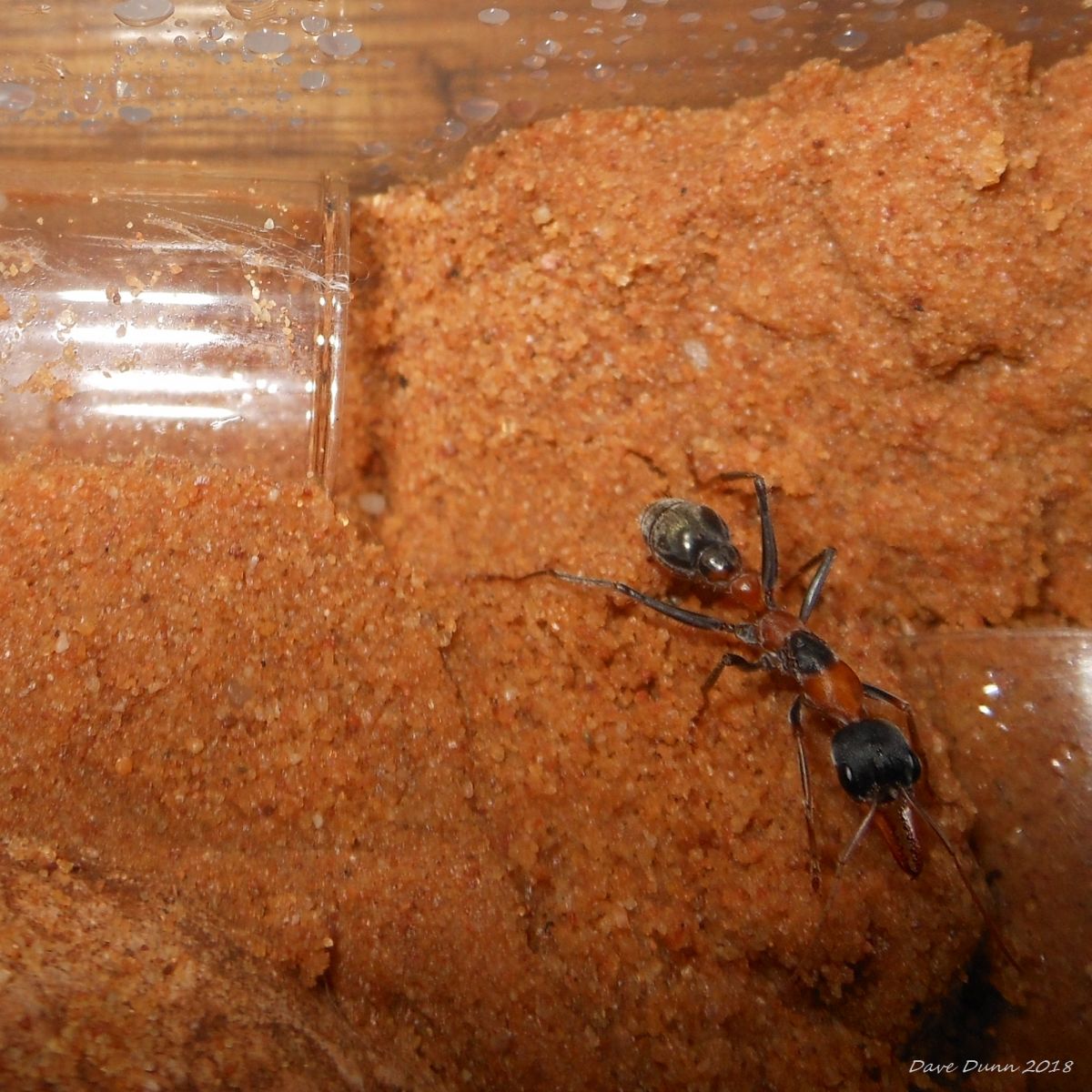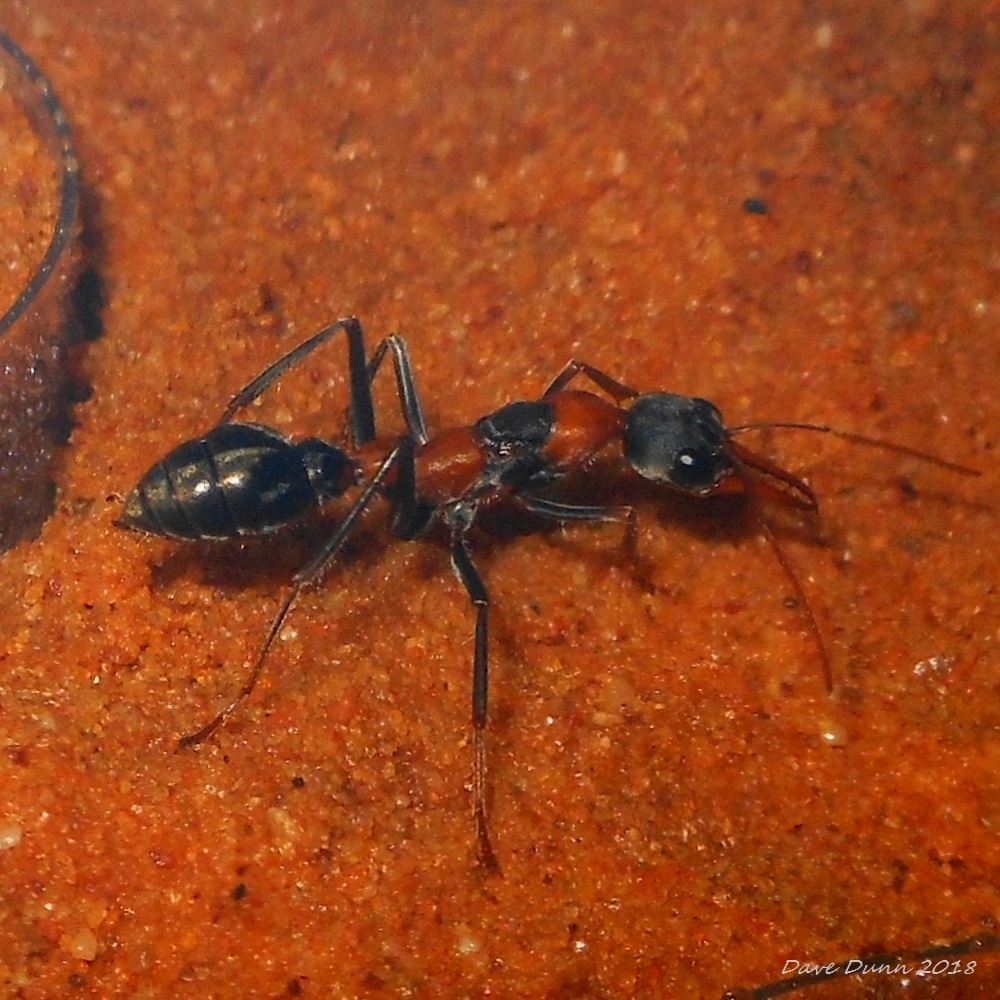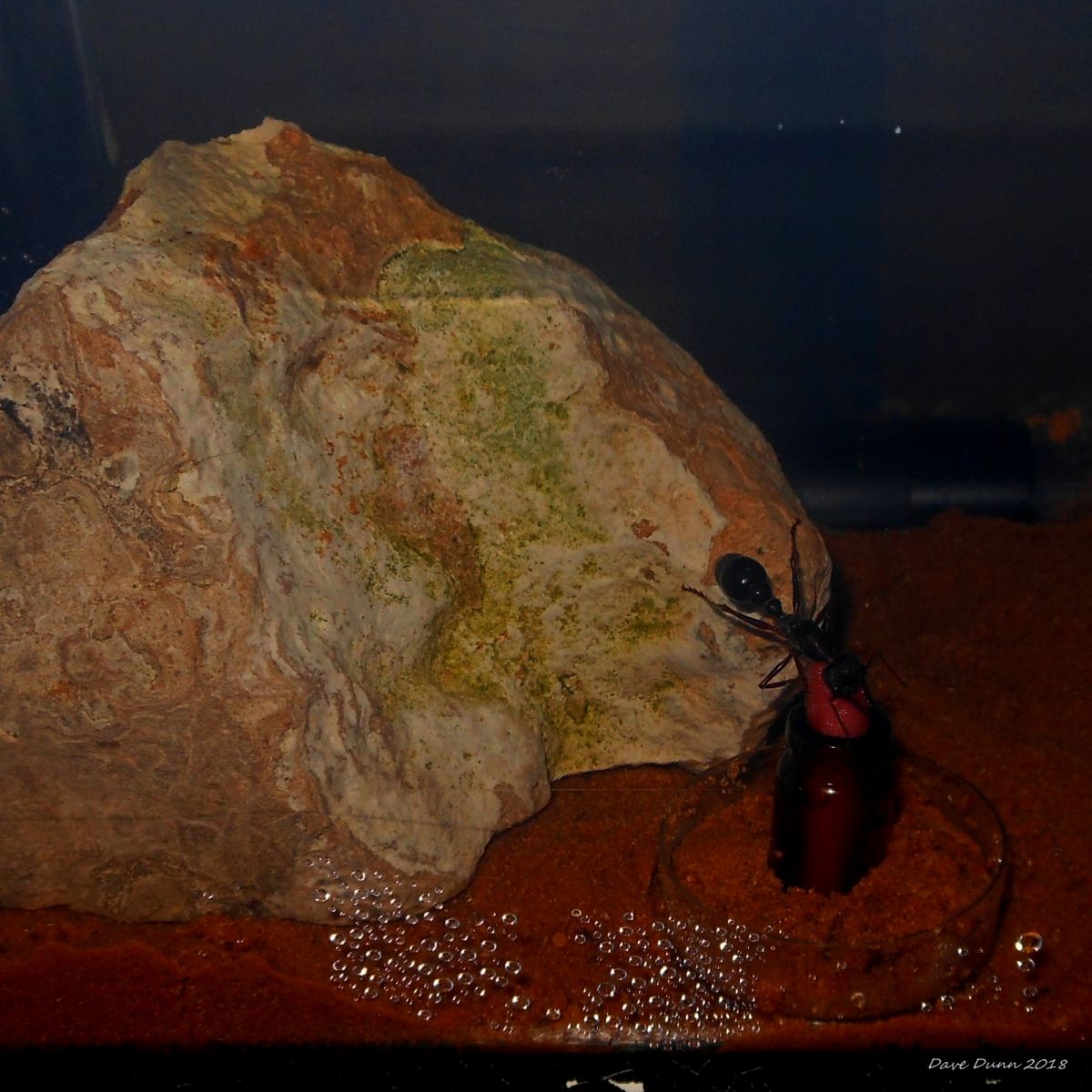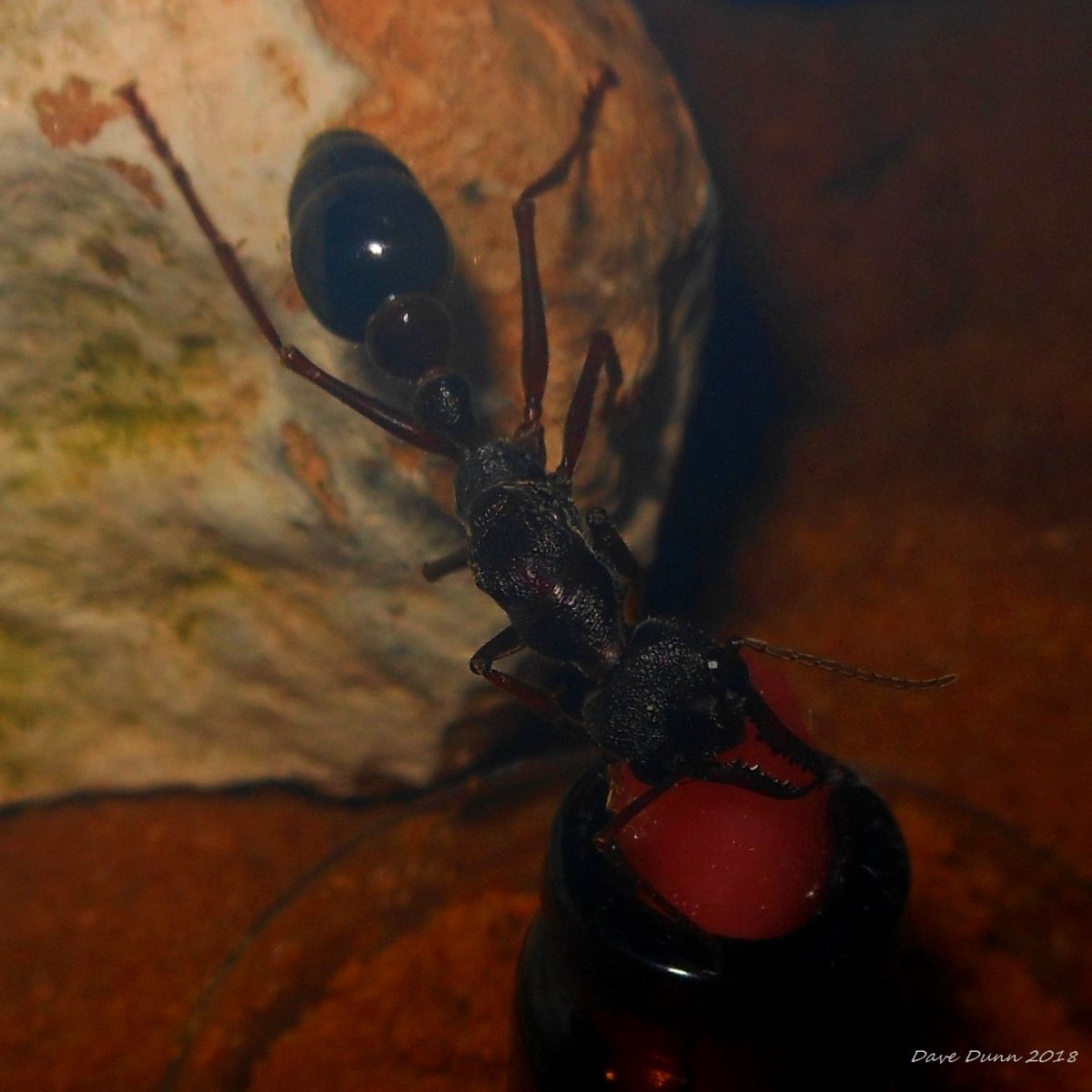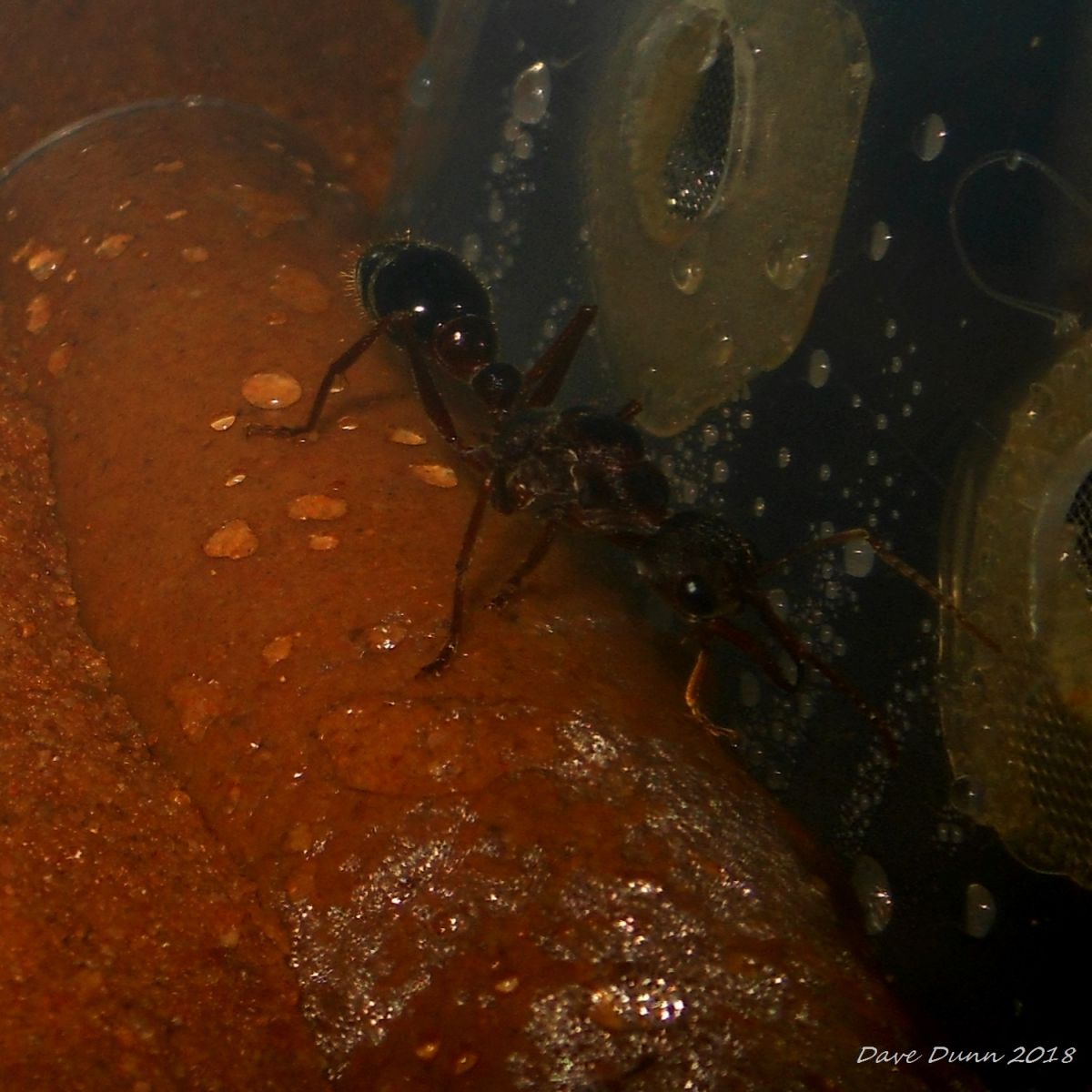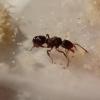17th continued
On the 15th I put some crickets in all of the enclosures, out of morbid curiosity I guess I put small live crickets into the Rhytidoponera metallica colony and into both of the C. consobrinus colonies. The metallica colony reacted predictably, at first only one or two ants were on guard and biting the cricket when it came near, but in the end only about 6 ants emerged to take down the cricket once it was partially immobilised by the two ants hanging off of it, once that happened it was over quite quickly once the stinging started.
The two consobrinus colonies reacted totally differently to the cricket appearing in their territory, in hindsight I wish I'd hadn't fed one colony and not the other but that was also due to the difference in the reactions rather than a cause I think.
Colony A were not bothered at all, even when it ventured into the nest a few nips made it leave but there was no follow up response, I put the food dish in and they were actually drinking sugar water with the cricket sitting next to them! In the end I squished the cricket with the tongs whereupon it stuck it's head into the nest entrance and died! The ants dragged it in. In a video I took I can see the queen picking up and eating what I hope is a cricket leg, not a larva!
Colony B reacted totally differently, as soon as a couple of workers got disturbed it was pandemonium! All hands on deck! Even the Queen came out and patrolled the boundaries. I couldn't take the lid of to feed them because they were going crazy! Because of the greenery in the enclosure the cricket was getting bitten a lot but could then hide, in the end I waited till there were none near the top and squished the cricket a bit and they finished it off because it was getting a bit cruel to the cricket and I assume stressful on the colony going on so long.
It's interesting though, one colony paying no mind, just not allowing the cricket into the actual nest and the other colony on high alert for hours.
Also, I've been experimenting a bit with the sugar water so I've coloured each batch a different colour only the Rose Pink I used first looks very similar to the Scarlet Red I used last, I have no yellow so I'm limited, purple just looked too dark so I tipped it out and used the Red, as long as I can tell one batch from the last it hardly matters. I see that the larvae seem to get a lot of sugar water in their diets, the pink/red is still visible in these pics even though they'd covered the sugar water a couple of days ago (same sugar water batch fed). You can see the pink in the workers gasters too, some have a light creamy coffee colour visible, that is a broth style catfood, their protein meal from a few days before.
Pictures of Queen A and brood.
Queen B and brood
And a few pics of Colony A workers drinking, not worried about the cricket at all (not starving or dying of thirst btw, they were fed a few days prior).
I thought I'd share what the Camponotus aeneopilosus have dug, they went sideways, then down, then horizontal again. this Formicarium has only a few gaps in the surface where a decent sized tunnel could be dug but the horizontal tunnels are below the surface layer of grout. I thought they were ready to move but they seem to have stopped digging and are still living in the test tube they came in. When I got them they had no brood at all but they've had a small pile for what seems like a long time now, hopefully when the weather warms up they'll get their stuff together! Since I've had them they've been at pretty constant 19/20 C but it will get much hotter than that very soon.
